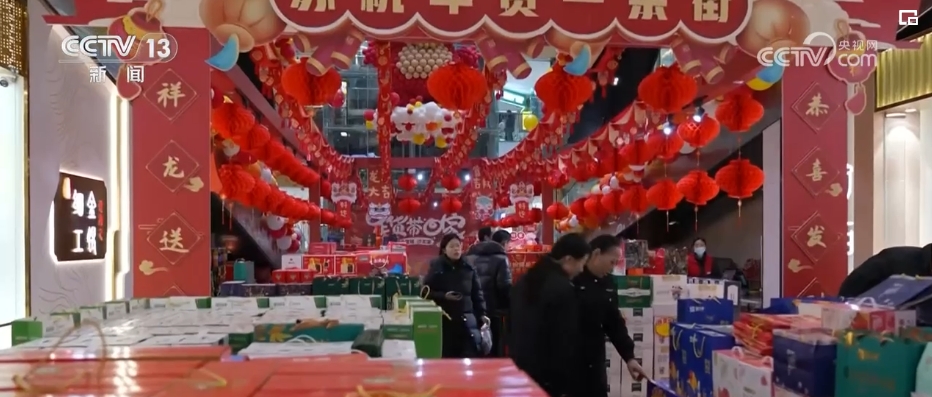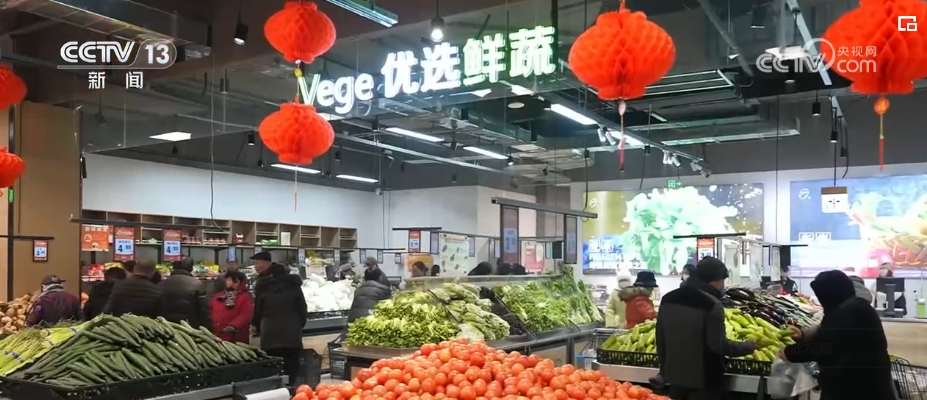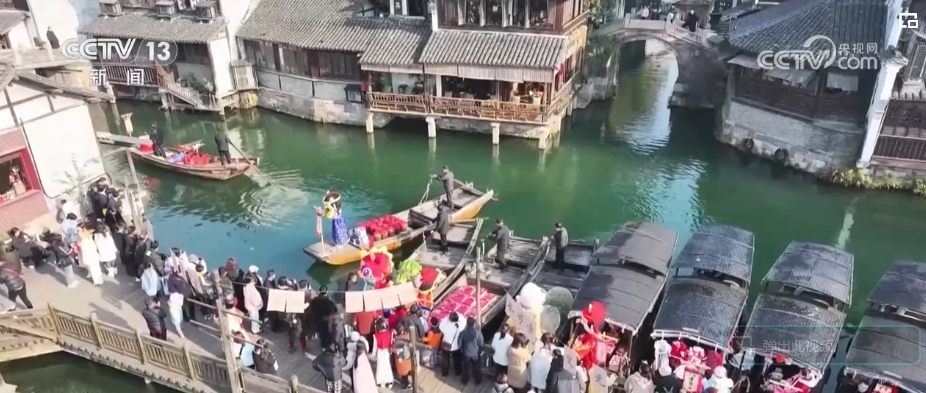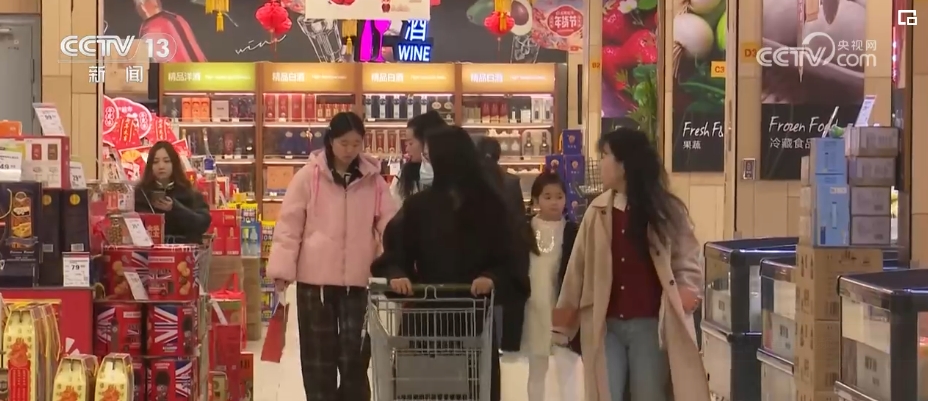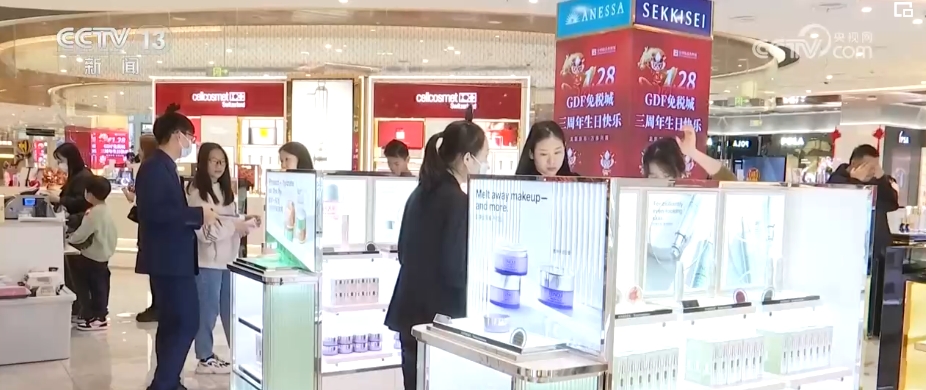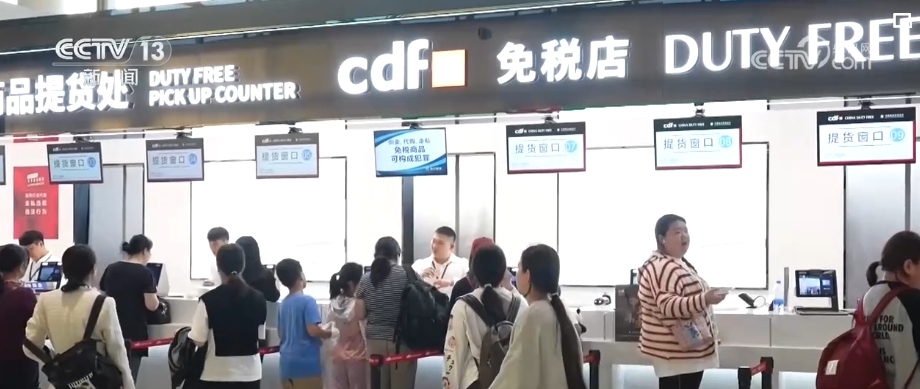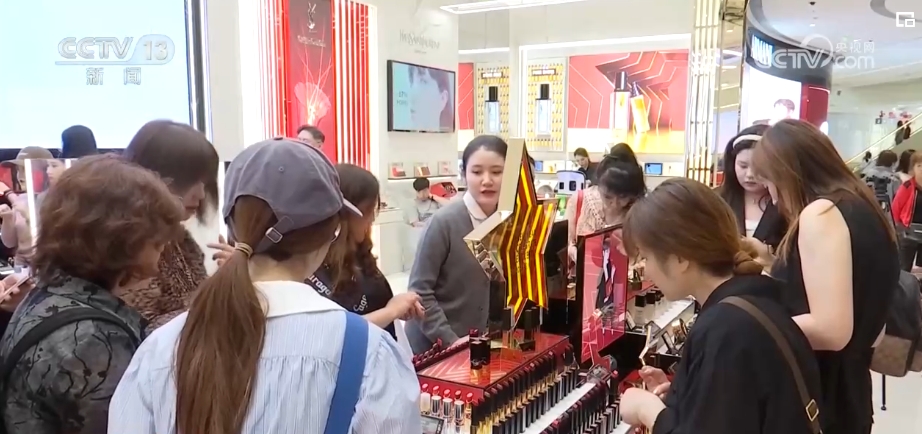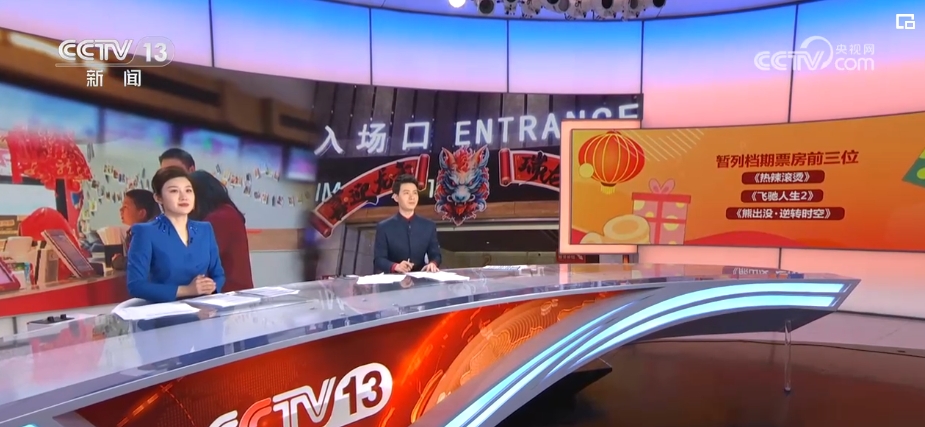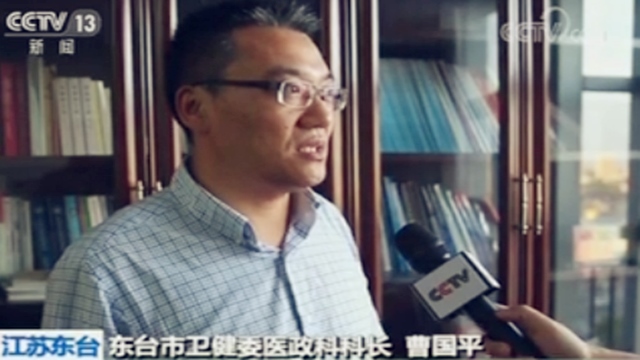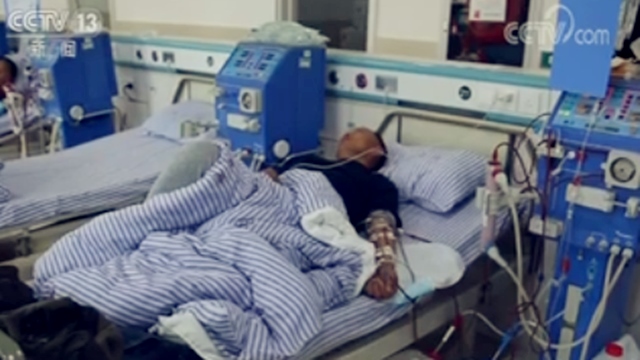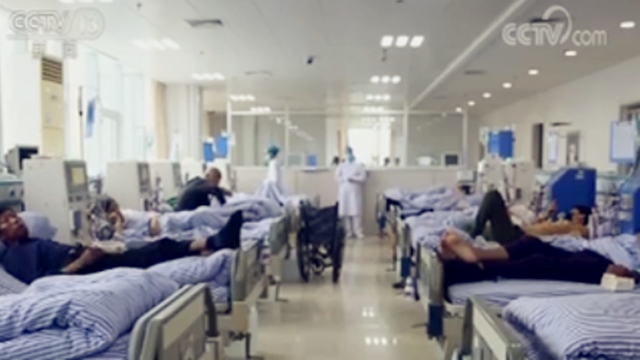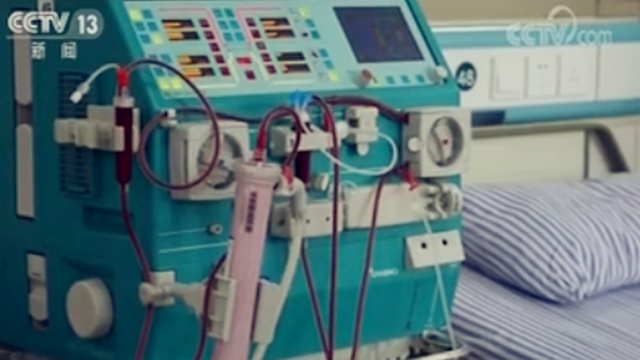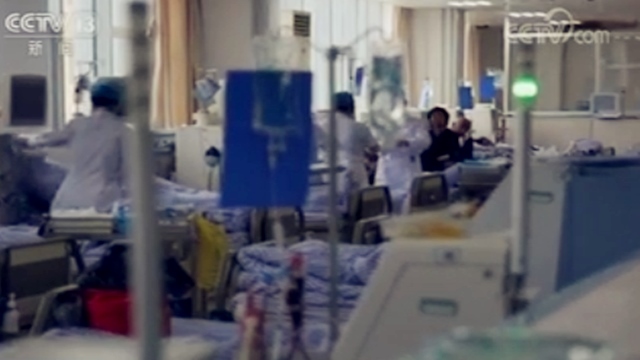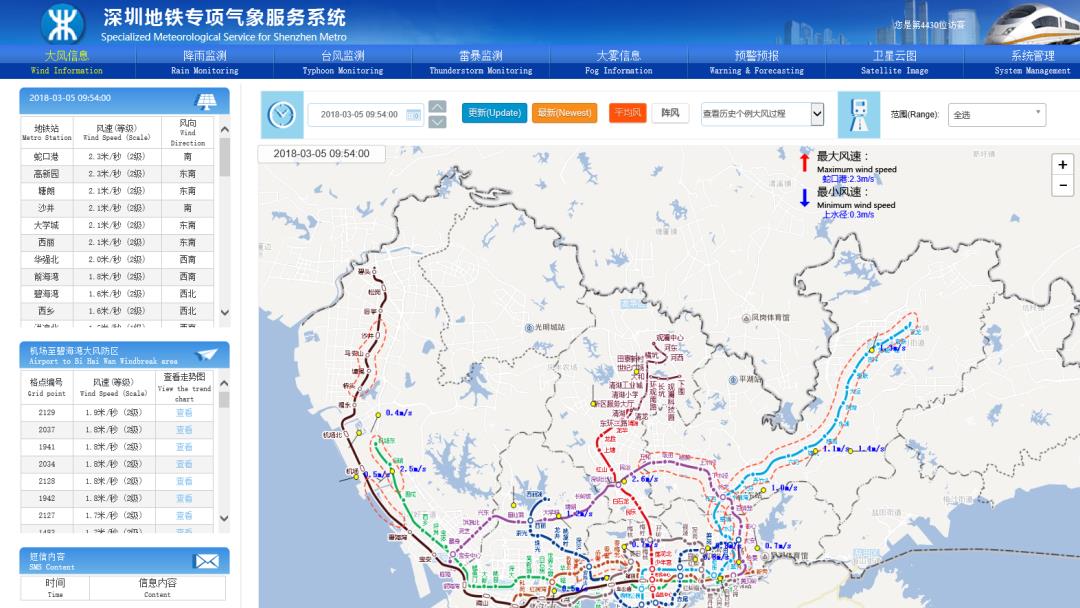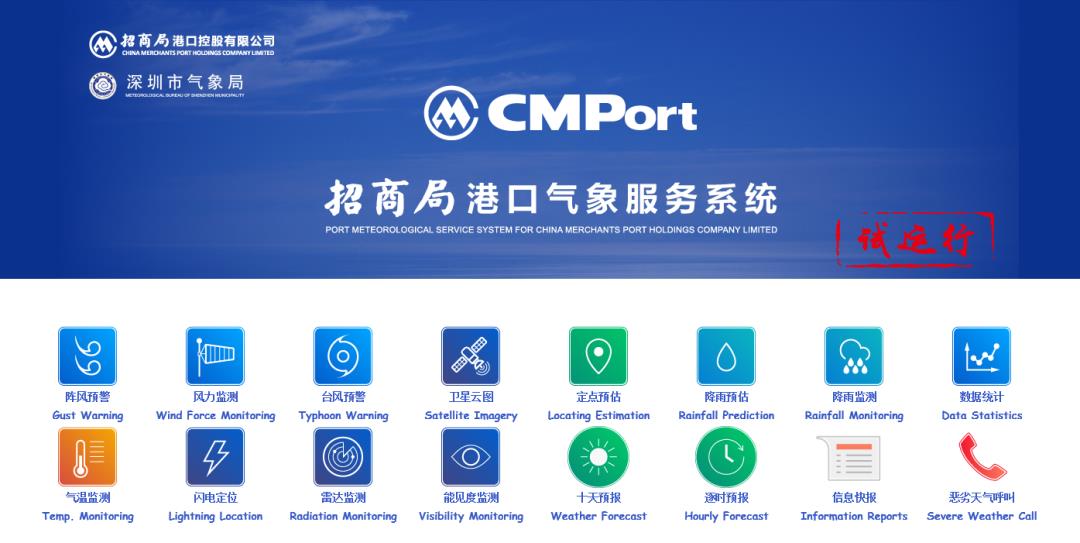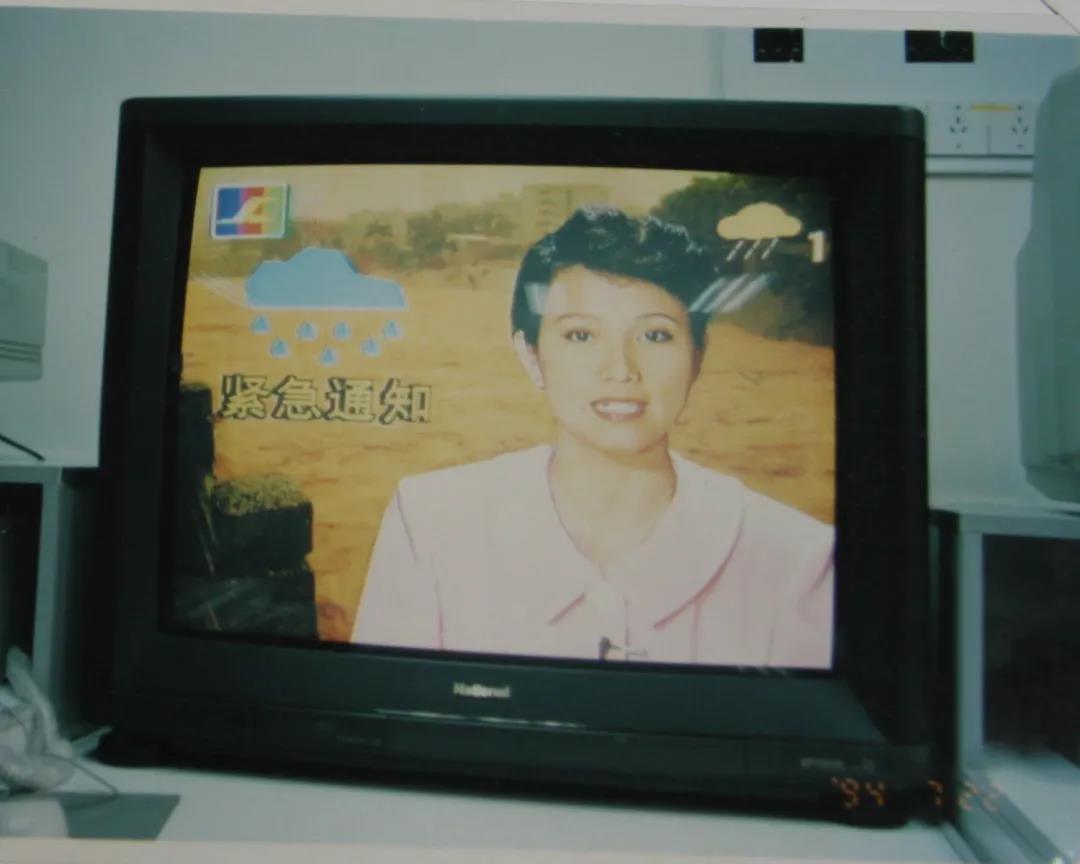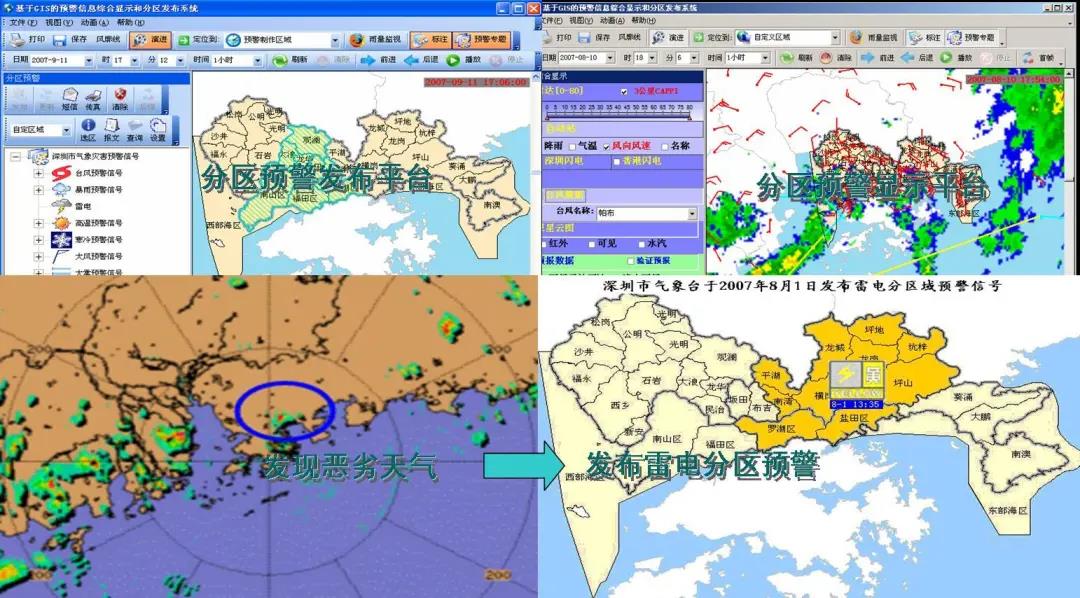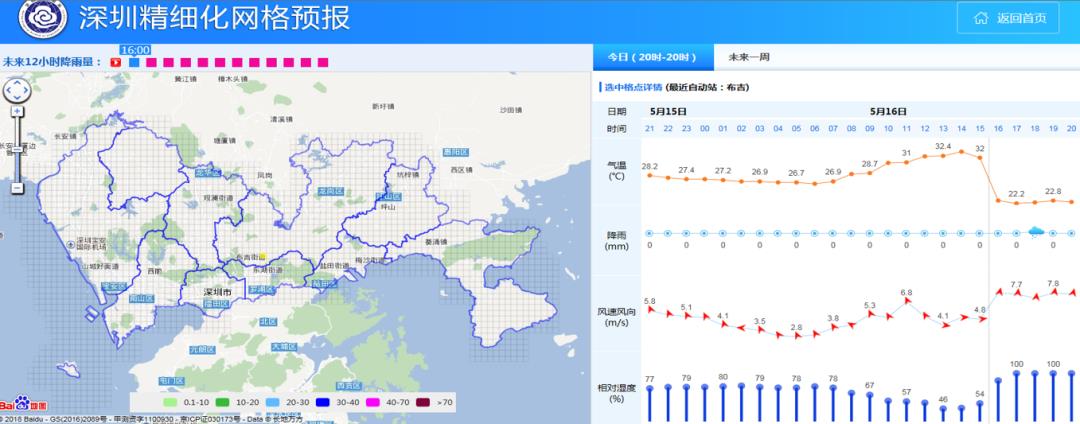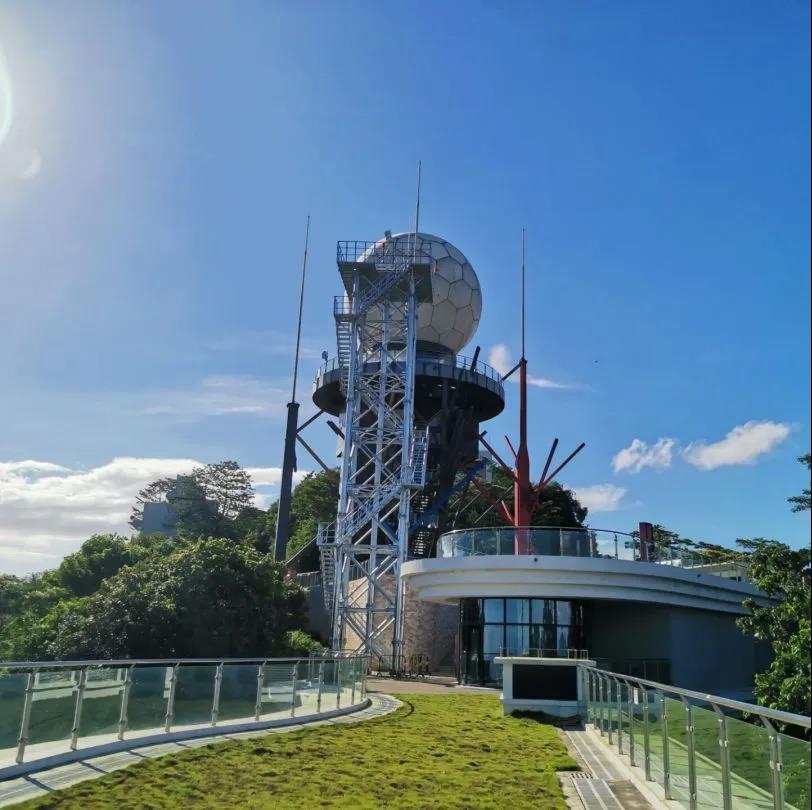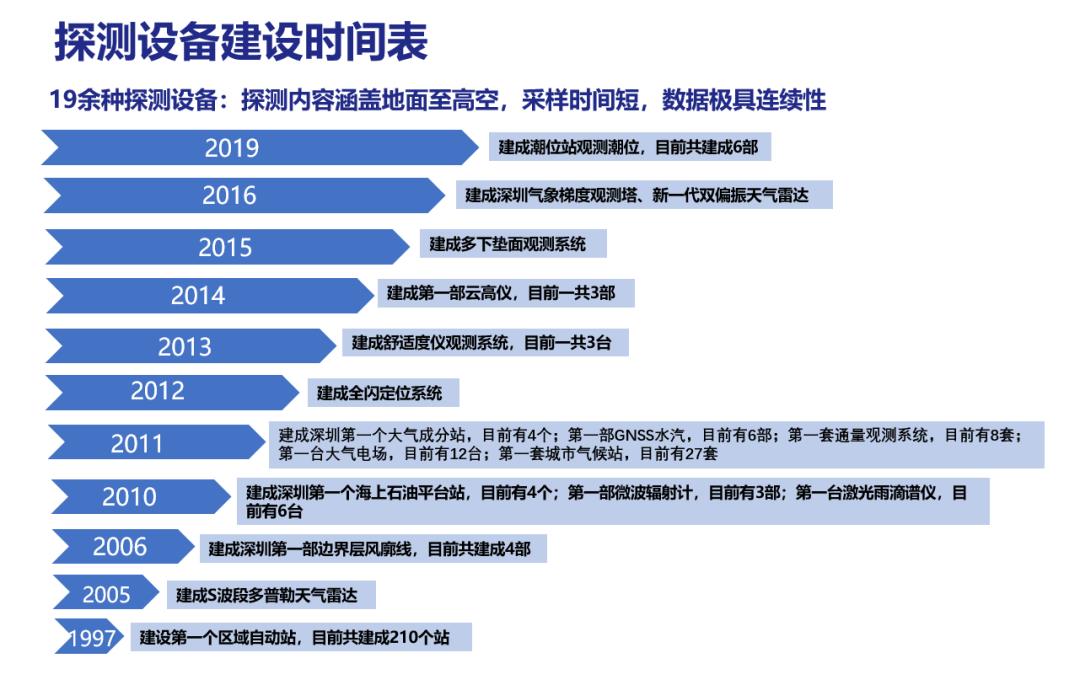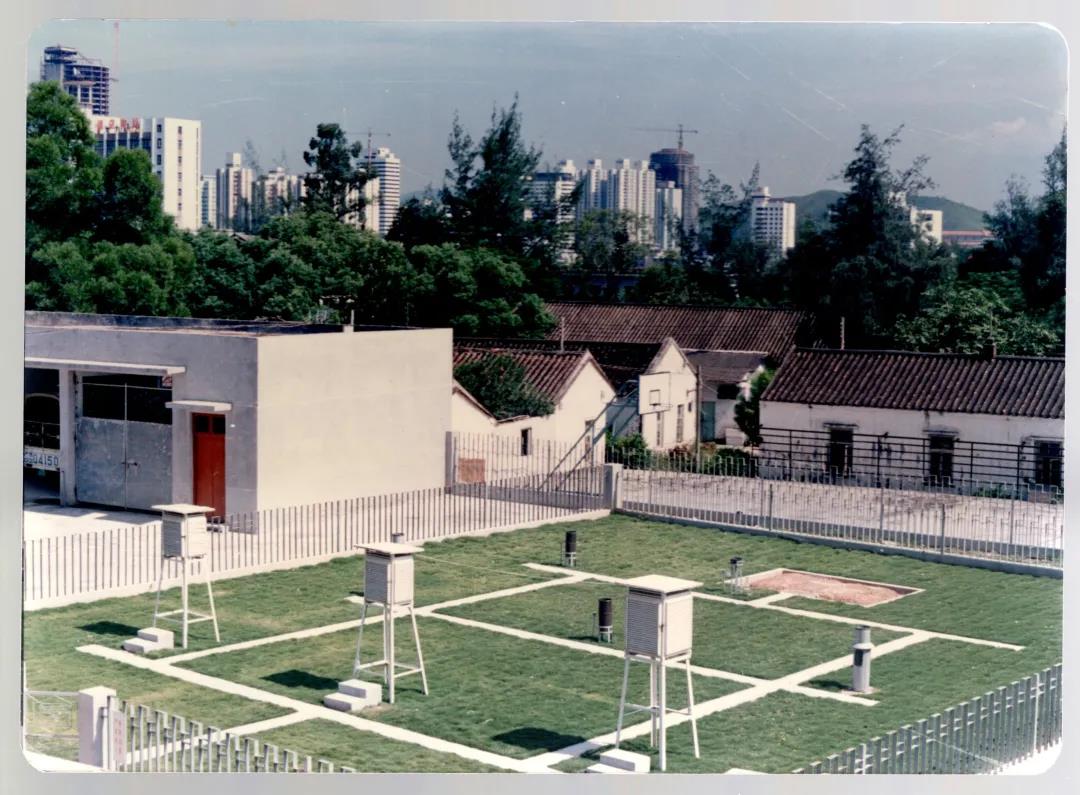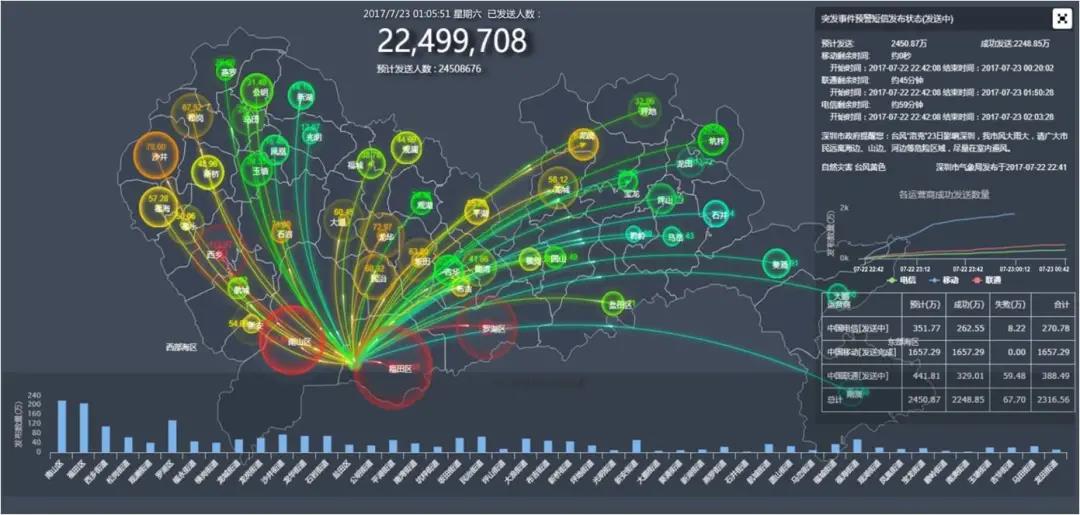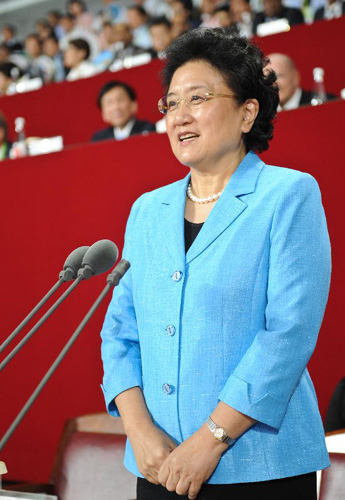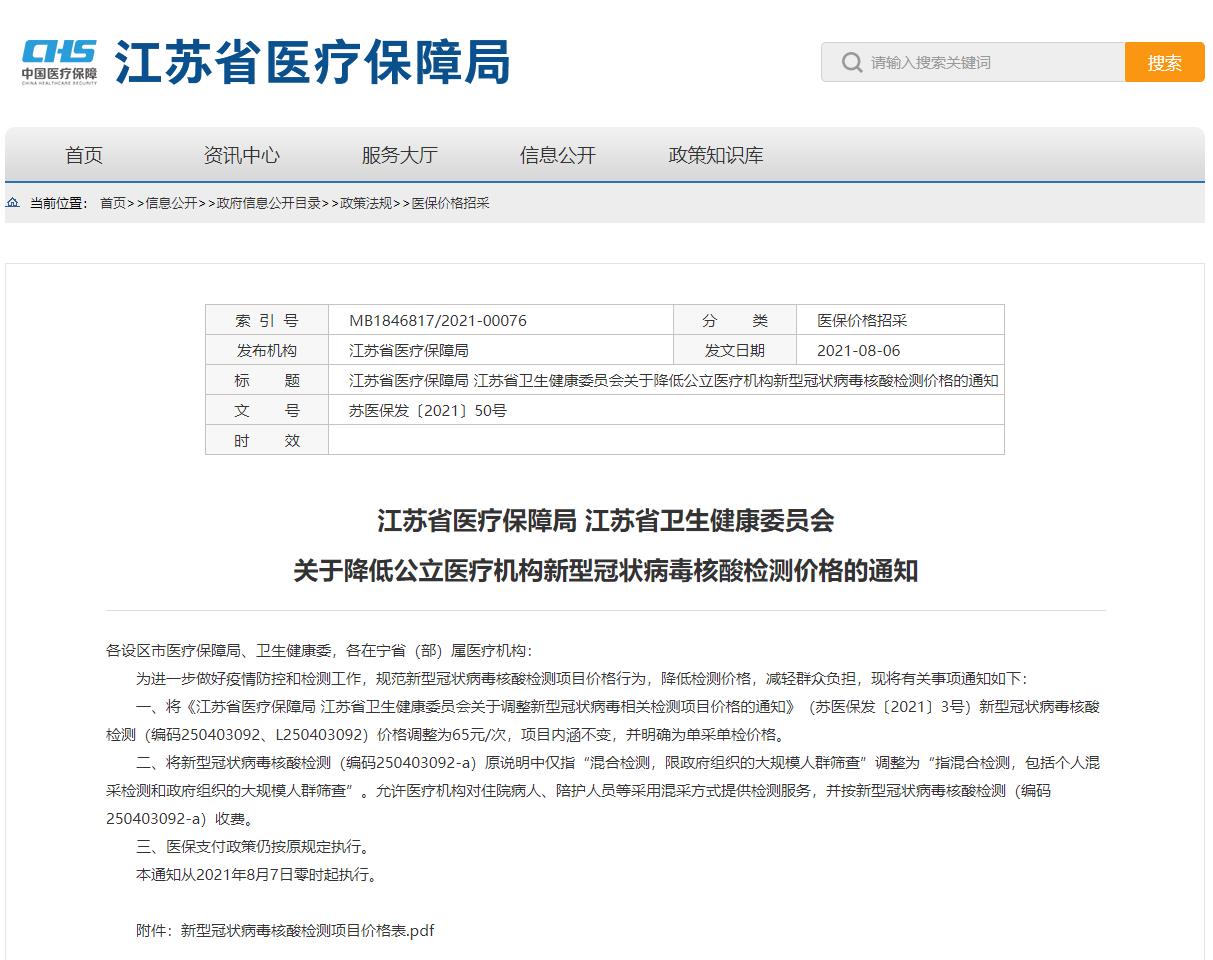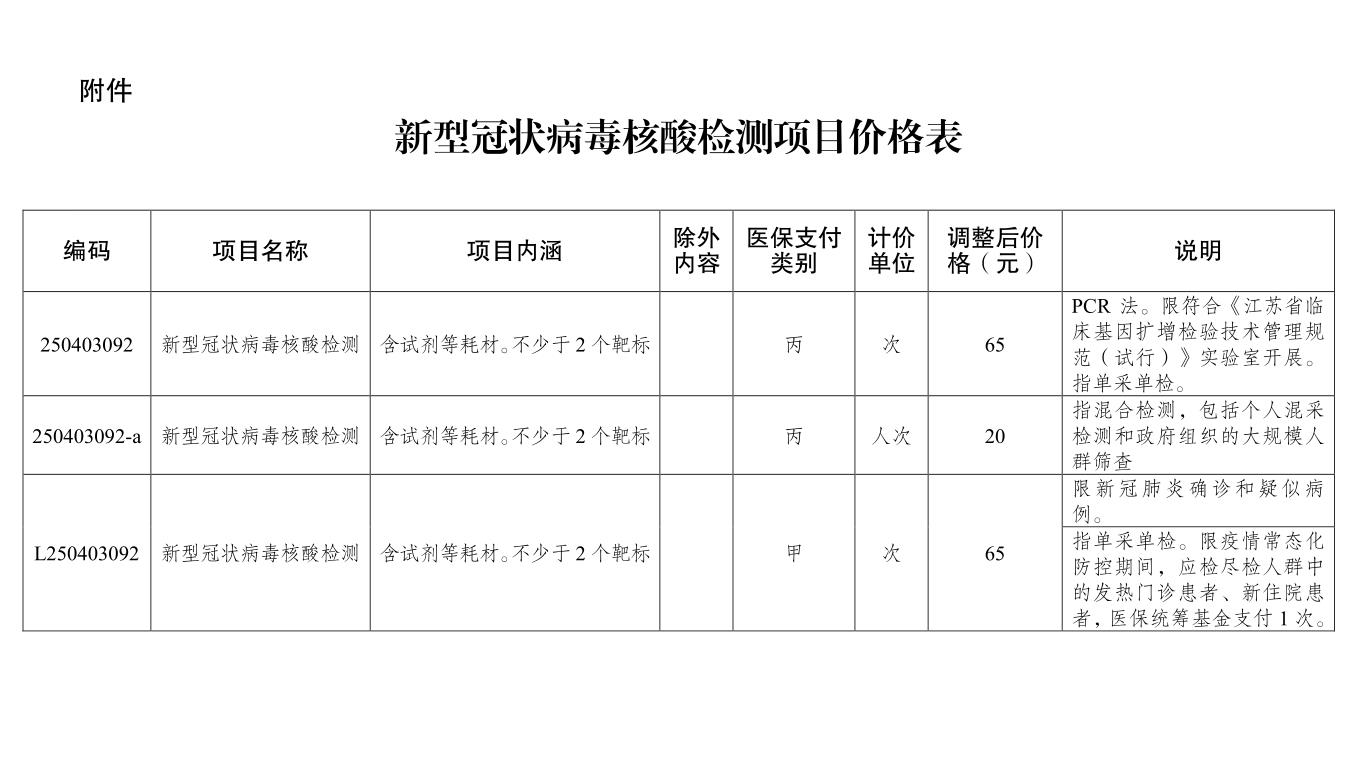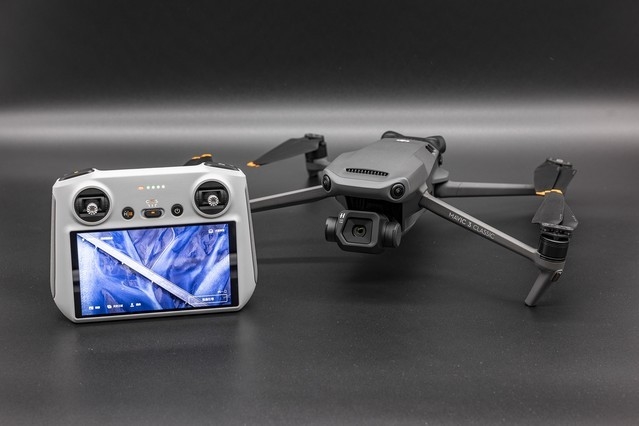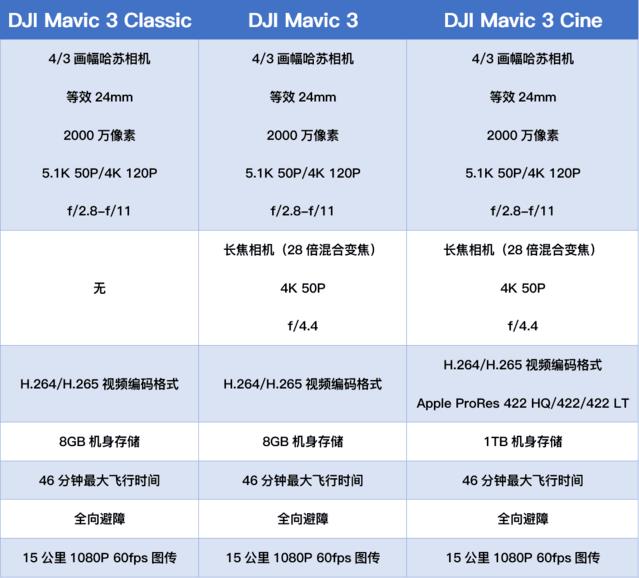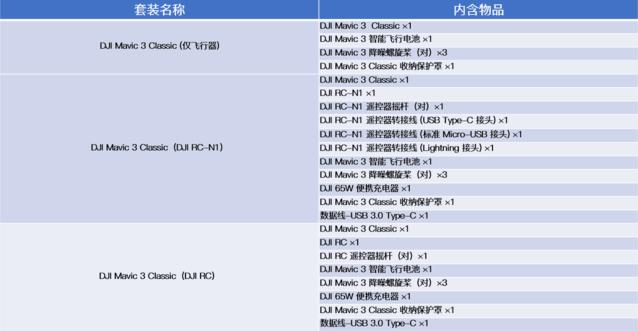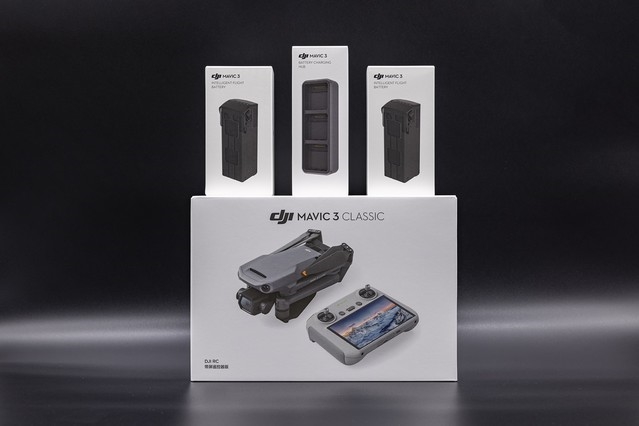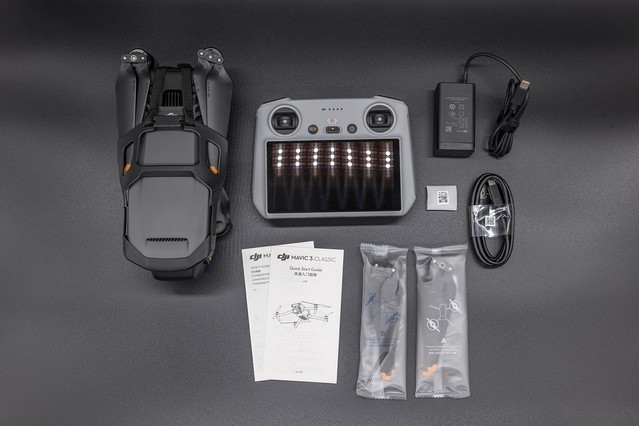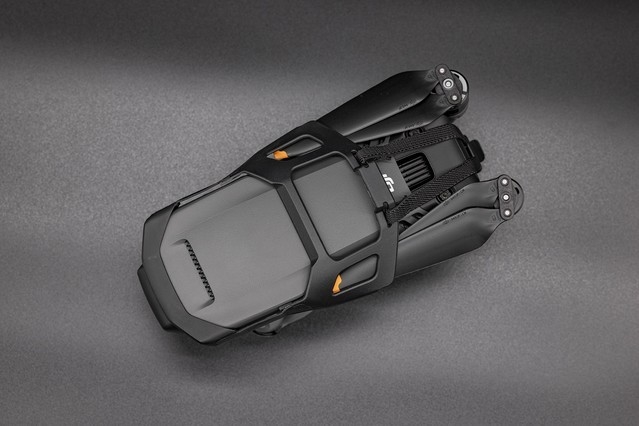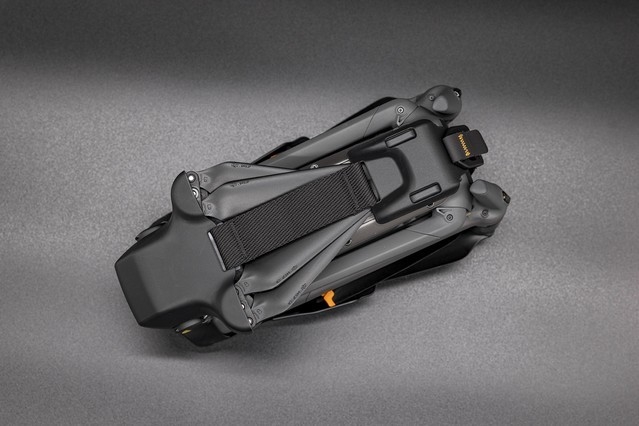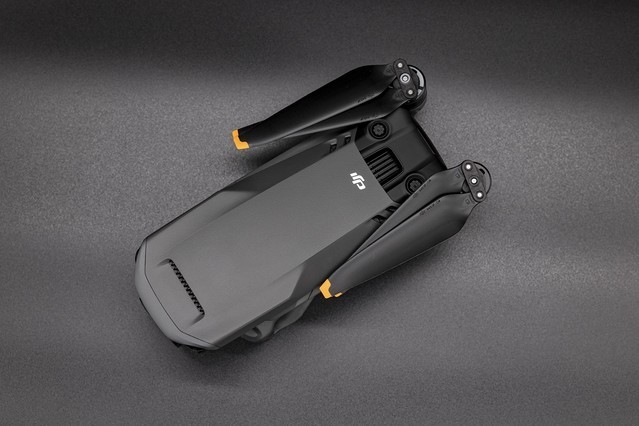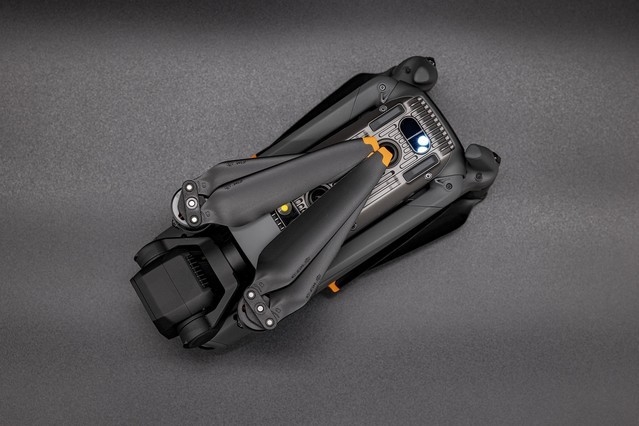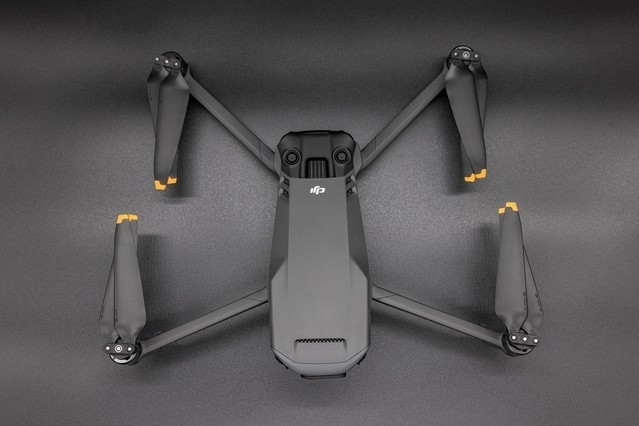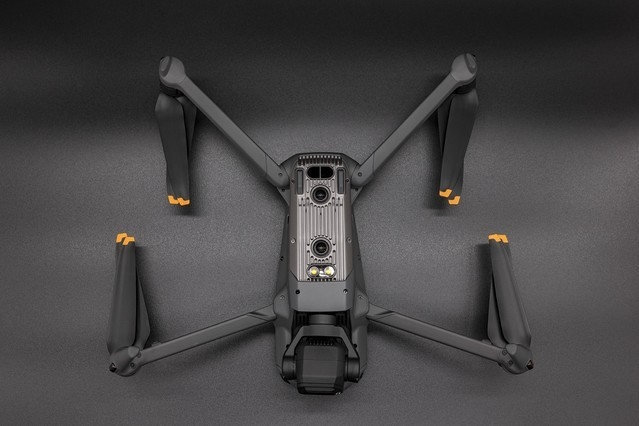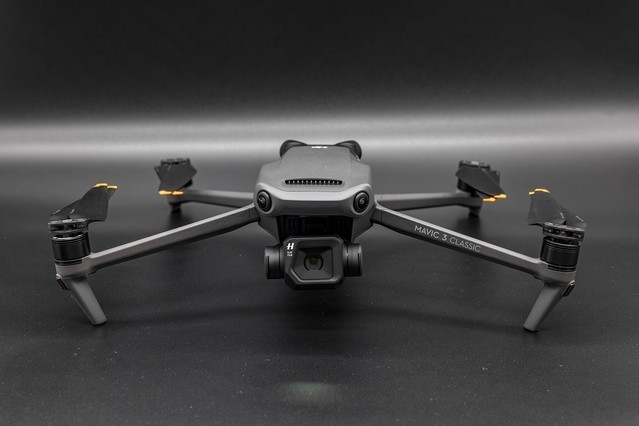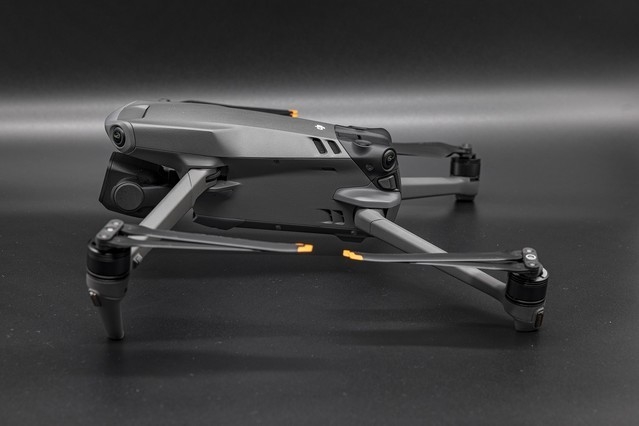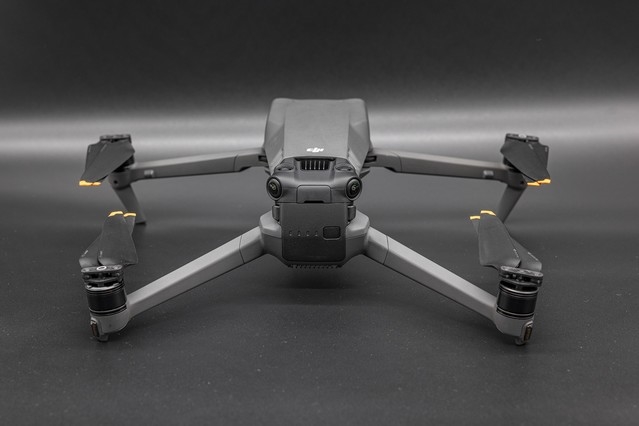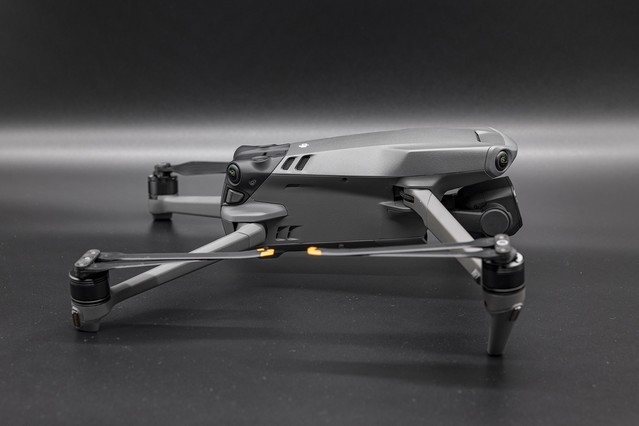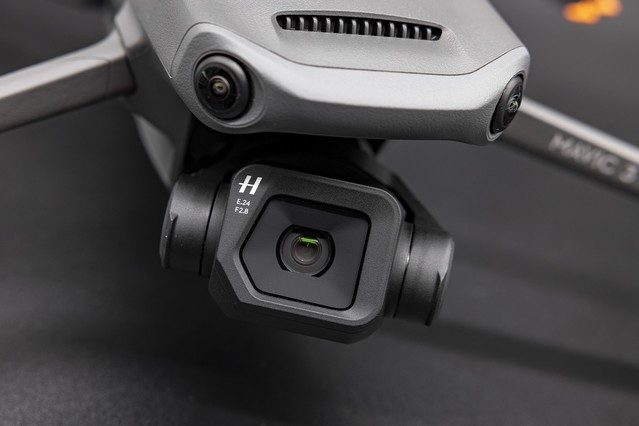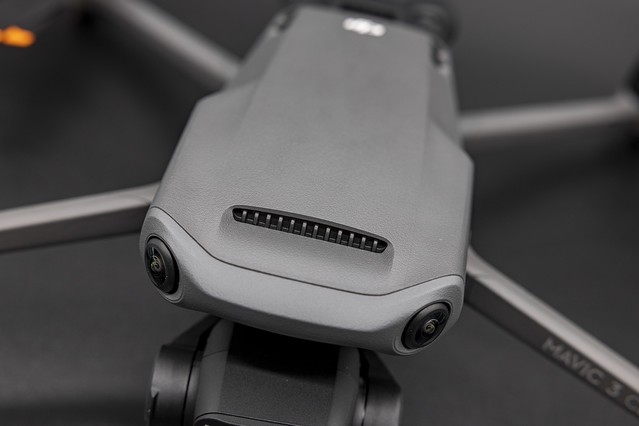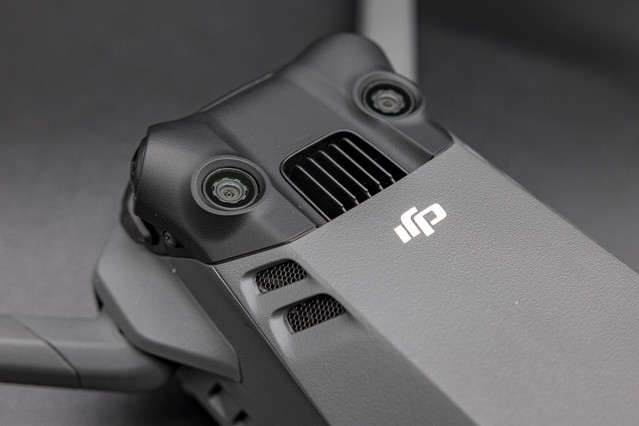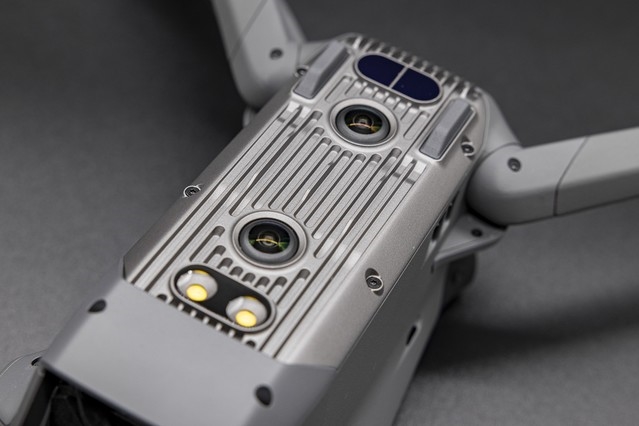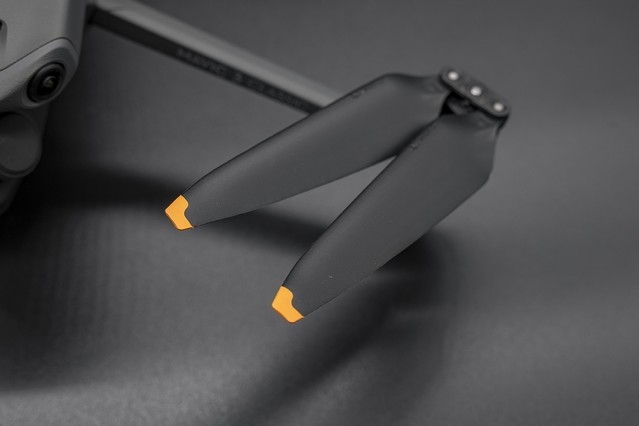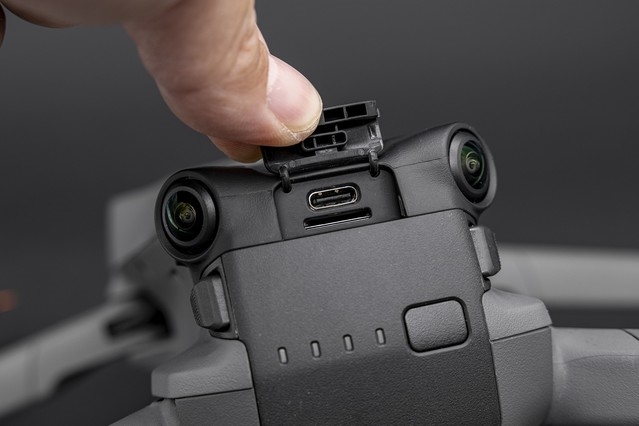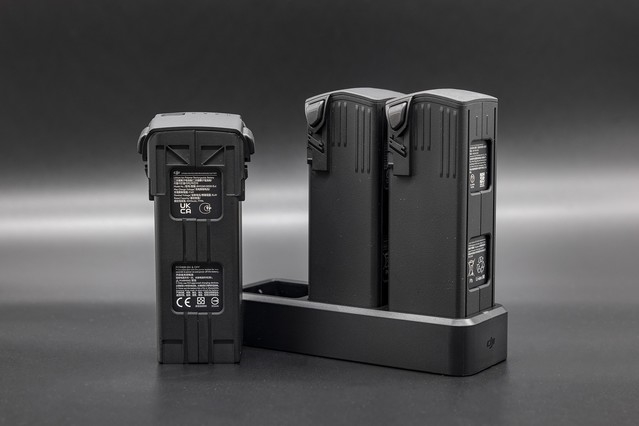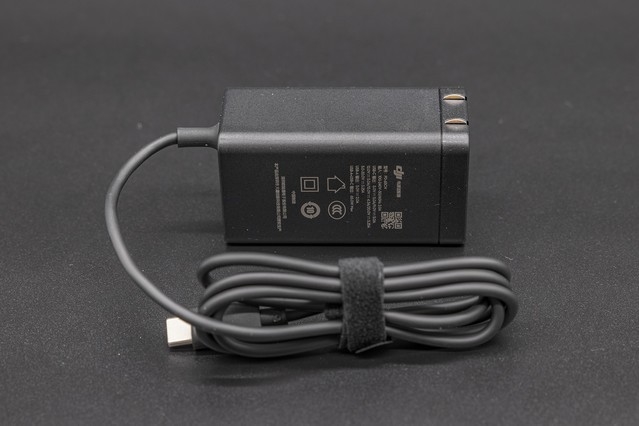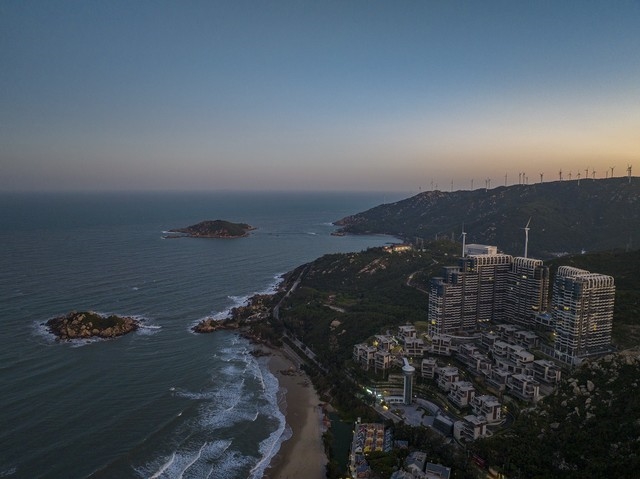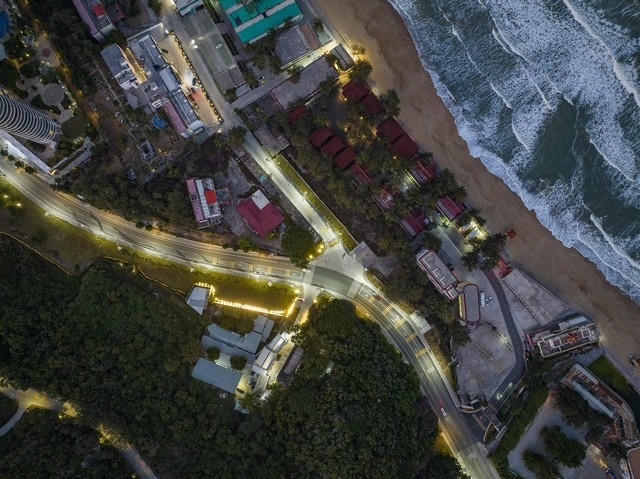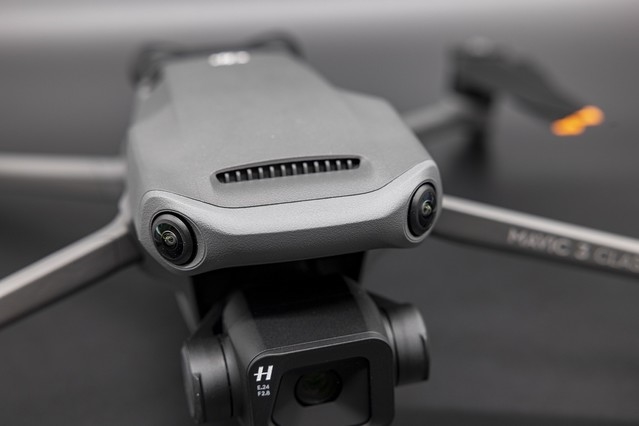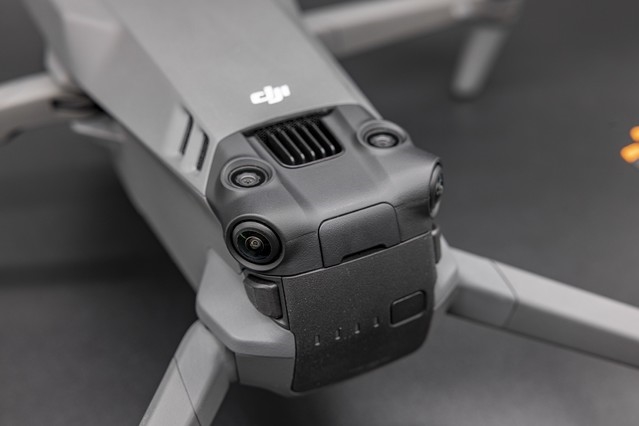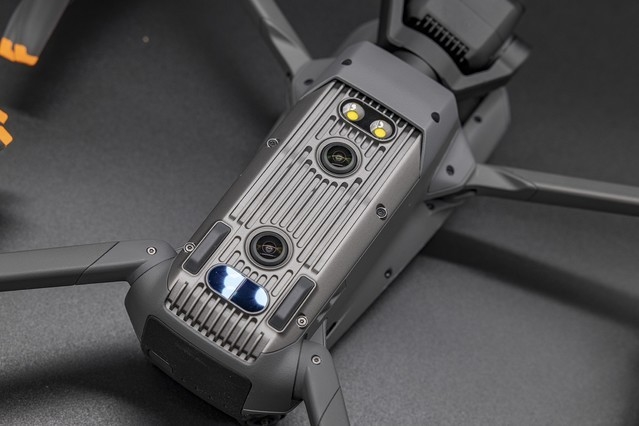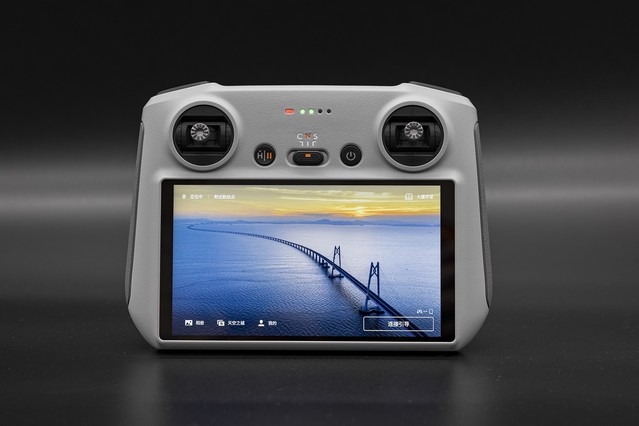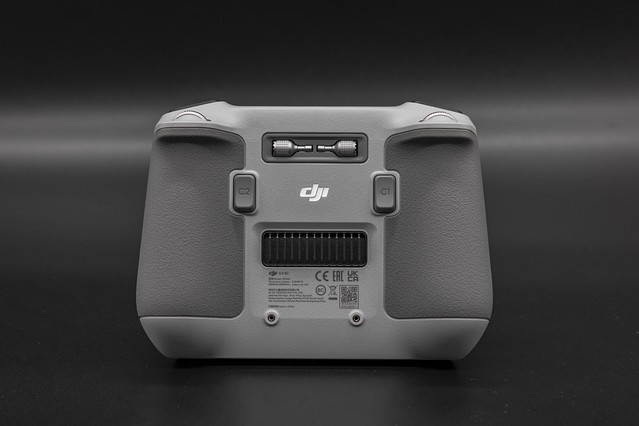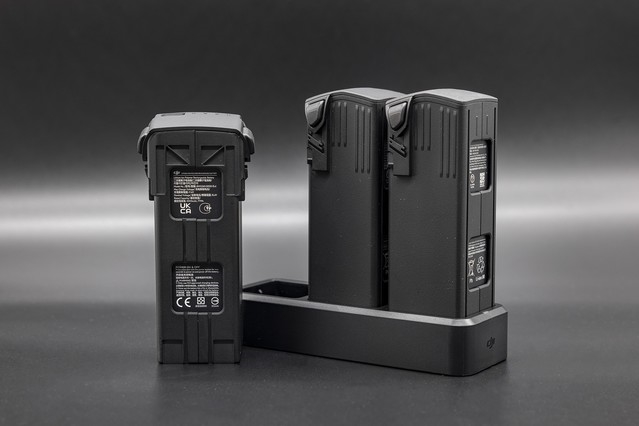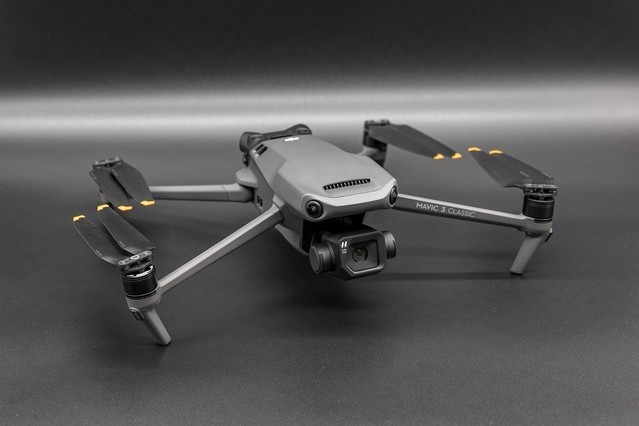Gigabit: A performance briefing will be held on October 31st with the participation of investors.
On November 1, 2022 (), it was announced that the company would hold a performance briefing on October 31, 2022.
The details are as follows:
Q: This plan will distribute almost all the profits in the first three quarters of this year to investors. What is the reason for this move? How can the company ensure a healthy cash flow when the competition in the domestic game market intensifies?
A: We will decide the dividend amount according to the cash reserve to ensure that the company’s cash reserve can maintain the normal operation of the company for at least 18 months. At present, our actual cash reserve after dividends is far beyond 18 months.
Q: This time, Gigabit plans to distribute almost all the profits in the first three quarters of this year to investors, and there have been many generous dividends before. How do you think about this? Will this have a greater impact on the company’s cash flow and future development needs?
A: The company has always attached great importance to reporting to investors and continued to report to shareholders through higher cash dividends. In 2020 and 2021, the company’s cash dividends were 862 million yuan and 1.15 billion yuan respectively. This dividend continued the company’s consistent thinking on reporting to shareholders.
The determination of dividend amount mainly considers the funds needed for the company’s long-term sustainable development and investors’ reports. We basically maintain the cash reserve for operating and developing for more than 18 months (if there is no income), and the retained funds after this distribution are enough to support this plan.
Q: When is the dividend in the third quarter?
A: Please pay attention to the company announcement for the specific dividend distribution time, and there will be an announcement after it is approved by the shareholders’ meeting.
Q: Dividends paid twice this year are different from previous years. What is the main reason? Has the company’s business development reached a certain bottleneck?
A: Our dividend will be based on the company’s cash reserves, and we will ensure that there is a cash reserve for at least 18 months according to the current expenditure. Now the actual reserve will be much higher than this. The purpose of this dividend is to feed shareholders. Whether the business development has reached the bottleneck mainly depends on the development of new projects. We still have enough ideas to be realized internally, and from this point we have not encountered a bottleneck.
Q: I appreciate the company’s attitude of paying large dividends when investors’ confidence is lacking. Have you considered the method of repurchase, which will be more beneficial to shareholders in the long run in terms of taxation?
A: At present, the company thinks that dividends are a more direct way to report to investors.
Q: I am concerned that Gigabit has participated in the investment of many companies in recent years, most of which are enterprises in the field of games, and mainly start-up companies. What is the logic of asking the company to invest? What do you pay more attention to when investing in start-up companies? Previously, the company indirectly participated in the company’s research and development of the explosive game "Sheep Made a Sheep", but the company’s third quarterly report showed that the company’s investment income in the first three quarters fell by 86% year-on-year. Is the explosive game only a flash in the pan?
A: We will mainly examine the start-up team and the selected track to judge whether to invest. The project of "Sheep Made a Sheep" has little impact on our third quarterly report. How much impact will it have in the future? We have to wait for the financial data of the other company. We are only shareholders and do not participate in the company’s operation.
Q: Since 2022, game companies have paid more attention to overseas markets. How do companies view overseas markets? What is the performance in overseas markets?
A: We have always attached importance to overseas markets. This year, most of the new pre-research and new projects are required to be global.
Q: Please ask Mr. Lu about the overall environment of the game industry. Did the company feel the overall downturn of the game industry in the second half of the year? In the past, games were regarded as partial entertainment consumption with countercyclical properties, but this year, due to the sharp decline in economic conditions, what does the company think?
A: At present, the overall situation of the game industry is relatively stable. Judging from the recently released economic data, the overall economic situation has not fallen sharply.
Q: Please, Chairman, since the company went public for 17 years, the only successful and mature products are Tao and Yi Nian Xiaoyao. The results show that the success and efficiency of product commercialization are low. What does the company think of this and whether it has found a good solution?
A: At present, we will try a lot by running in small steps. If we have a good idea, the possibility of success after the project is established will be higher.
Gigabit’s main business: specializing in online game creative planning, R&D production and commercial operation.
The third quarterly report of Gigabit 2022 shows that the company’s main income is 3.83 billion yuan, up 9.89% year-on-year; The net profit of returning to the mother was 1.012 billion yuan, a year-on-year decrease of 16.07%; Deducting non-net profit was 1.002 billion yuan, down 0.0% year-on-year; In the third quarter of 2022, the company’s main revenue in a single quarter was 1.319 billion yuan, up 20.17% year-on-year; The net profit returned to the mother in a single quarter was 323 million yuan, up 6.15% year-on-year; Non-net profit deducted in a single quarter was 335 million yuan, up 12.59% year-on-year; The debt ratio is 30.15%, the investment income is 18.492 million yuan, the financial expenses are-245 million yuan, and the gross profit margin is 88.17%.
In the last 90 days, the stock has been rated by 34 institutions, with 29 buy ratings and 5 overweight ratings. The average target price of institutions in the past 90 days was 354.21.
The following is the detailed profit forecast information:

The data of margin financing and securities lending shows that the stock has a net inflow of 370,100 in the past three months, and the financing balance has increased; The net inflow of securities lending was 2,073,400, and the balance of securities lending increased. According to the financial report data in the past five years, the Securities Star valuation analysis tool shows that the moat of competitiveness in Gigabit industry is good, the profitability is average and the revenue growth is good. Financial health. The stock has a good company index of 3.5 stars, a good price index of 3.5 stars and a comprehensive index of 3.5 stars. (The index is for reference only, and the index range is 0~5 stars, with a maximum of 5 stars)
The above contents are compiled by Securities Star according to public information, and have nothing to do with the position of this website. Securities Star strives for but does not guarantee the accuracy, completeness, effectiveness and timeliness of all or part of this information (including but not limited to text, video, audio, data and charts). Please contact us if you have any questions. This article is for data collation, and does not constitute any investment advice for you. Investment is risky, so please make a careful decision.
Energy-saving wind power is planned to be established. Heilongjiang wind power is responsible for Mulan 200MW wind power+clean heating project.
() Announcement, the company plans to invest in the establishment of China Energy Saving Heilongjiang Wind Power Generation Co., Ltd., with an investment of 10 million yuan. After the establishment of Heilongjiang wind power, it will be responsible for the development and construction of the 200MW wind power+clean heating project in Heilongjiang Mulan.
Universal Scientific Industrial Co.,Ltd.: Consolidated operating income in October increased by 36.16% year-on-year.
() It was announced on the evening of November 8 that the consolidated operating income in October 2022 was 7.076 billion yuan, an increase of 36.16% compared with the consolidated operating income in the same period last year and a decrease of 10.01% compared with the consolidated operating income in September 2022. The company’s consolidated operating income from January to October 2022 was 56.607 billion yuan, an increase of 35.70% compared with the same period last year.
Bomaike Holdings, the controlling shareholder of Bomaike, and other non-reduced shares have expired.
() Announcement was issued. On November 8, 2022, the company received the Letter from Tianjin Bomaike Investment Holdings Co., Ltd. on the result of reducing the shares of Bomaike Offshore Engineering Co., Ltd. and the Letter from Tianjin Chengtai International Industry and Trade Co., Ltd. on the result of reducing the shares of Bomaike Offshore Engineering Co., Ltd. As of the date of this announcement, the time interval for this reduction expired, and the controlling shareholder of the company Bomaike Holdings and its concerted action Chengtai Industry and Trade did not reduce the shares of the company during the reduction plan period.
Tianchen Co., Ltd. subsidiary plans to invest 1.71 billion yuan in the 1B project of the East Block of Tianchen Health City.
() Announcement: According to the plan of Shanghai Tianchen Health Management Co., Ltd. (referred to as "Tianchen Health Company"), Tianchen Health Company will start the development and construction of the 1B project of the East Block of Tianchen Health City this year, with an estimated total investment of about RMB 1.71 billion, which will be used to build offices, hotels and business complex buildings. The project is located in Zhuanqiao Town, Minhang District, Shanghai, with Metropolitan Road East, Yindu Road South, Dulian Road West and Meizhou Road North.
Zheng Hong, the controlling shareholder and actual controller of Hongyuan Electronics, and his concerted actions intend to reduce their holdings by no more than 2 million shares.
() Announce that Mr. Zheng Hong, the controlling shareholder, actual controller and chairman of the company, intends to reduce the company’s shares by no more than 1.5 million shares through centralized bidding or block trading, that is, no more than 0.6454% of the company’s total share capital; Ms. Zheng Xiaodan, the controlling shareholder, actual controller and vice chairman of the company, intends to reduce the company’s shares by no more than 500,000 shares through centralized bidding or block trading, that is, no more than 0.2151% of the company’s total share capital. Mr. Zheng Hong and Ms. Zheng Xiaodan intend to reduce their holdings of the company’s shares by centralized bidding or block trading, with a total of no more than 2 million shares, that is, no more than 0.8606% of the company’s total share capital.
Huayuan real estate stock Tokyo Thai Investment intends to reduce its holdings by no more than 10.8 million shares of the company.
() It is announced that Beijing Beikong Jingtai Investment Management Co., Ltd. (hereinafter referred to as "Jingtai Investment"), the shareholder of the company, intends to reduce its shareholding by centralized bidding within 6 months after 15 trading days from the date of disclosure of this announcement, that is, the shareholding reduction shall not exceed 0.46% of the total shares of the company.
Chilon Tianyou, the shareholder of Aojing Medical, intends to reduce its shareholding by no more than 3%.
Aojing Medical announced that Chilon Tianyou, the shareholder of the company, plans to reduce the company’s shares by no more than 4 million shares through centralized bidding and block trading, accounting for 3% of the company’s total shares.
Aojing Medical: Chilon Tianyou intends to reduce its shareholding by no more than 3%.
Aojing Medical announced on the evening of November 8th that Chilon Tianyou, a shareholder holding 6.8% of the shares, plans to reduce its holdings by no more than 4 million shares (accounting for 3% of the company’s total shares) through centralized bidding and block trading.
The inquiry transfer price of Anfeng Investment, the shareholder of Zhuojin, was initially determined as 9 yuan/share.
Zhuojin shares announced that after inquiring from institutional investors, it was preliminarily determined that the transfer price of Zhuhai Anfeng Investment Partnership (Limited Partnership) (the "transferor") was 9.00 yuan/share, which was 88.93% of the average transaction price of Zhuojin shares in the first 20 trading days of the shareholders’ inquiry transfer subscription date (November 7, 2022, including that day). In addition, the number of institutional investors participating in this inquiry and transfer quotation is 2, and the total effective subscription is 1.7 million shares, which is 1.13 times of the number of shares to be transferred.
Sunshine Nuohe plans to acquire 100% equity of Langyan Life and resume trading today.
On the evening of November 7, Sunshine Nuohe announced that it intends to purchase 100% equity of Beijing Langyan Life Technology Holdings Co., Ltd. (referred to as "Langyan Life") by issuing shares and paying cash, and issue shares to no more than 35 specific investors to raise matching funds. Sunshine Nuohe shares also resumed trading on November 8, and closed at 114.5 yuan/share that day, with an increase of 15.16%.
Previously, Sunshine Nuohe signed the Intention Agreement for Beijing Sunshine Nuohe Pharmaceutical Research Co., Ltd. to issue shares and pay cash to purchase assets with Li Qian, the main shareholders of Langyan Life, Ganzhou Langyi Investment Center (Limited Partnership) and Liu Yujing, and agreed to purchase the shares of Langyan Life by issuing shares and paying cash, and suspended trading on October 25.
Sunshine Nuohe is a professional pre-clinical and clinical comprehensive drug research and development service CRO, which provides all-round one-stop drug research and development services for domestic pharmaceutical enterprises and scientific research institutions, and is committed to assisting domestic pharmaceutical manufacturing enterprises to accelerate import substitution and independent innovation. Langyan Life focuses on the R&D, production and sales of high-end chemicals and APIs, and provides pharmaceutical production services to the outside world. It has been deeply involved in high-end chemicals and APIs for many years and has certain competitive advantages in the field of high-end chemicals.
Sunshine Nuohe said that through this transaction, Langyan Life became its wholly-owned subsidiary, and its main business will further extend to the CDMO business field, and build an integrated service platform of "CRO+CDMO" to provide customers with comprehensive services of "pre-clinical research+clinical research+customized production" and build an integrated service system of "R&D+production".
Tan Chun, the shareholder of Lingdian Electric Control Co., Ltd., has reduced his holdings by 2.61%, and the reduction time has expired.
Lingdian Electric Control announced that on November 8, 2022, the company received the Notice Letter on the Result of Shareholding Reduction issued by Ms. Tan Chun. In this reduction plan, Ms. Tan Chun reduced her shareholding by 1,353,700 shares through block trading, accounting for 2.61% of the total shares of the company. The time interval of this reduction plan has expired, and this reduction plan has been implemented.
An Biping plans to participate in the Gaotejia Huixin Fund, with its focus on the medical and health industry.
An Biping announced that An Biping (Guangdong) Investment Co., Ltd. ("An Biping Investment"), a wholly-owned subsidiary of the company, will subscribe for RMB 10 million as a limited partner, holding 2.00% of Suzhou Gaotejiaxin Yinhuixin Equity Investment Partnership (Limited Partnership) (tentative name, "Gaotejiaxinxin"); Gaotejia Huixin focuses on investing in enterprises in the high-quality growth stage of the medical and health industry.
() The subsidiary will provide Weirui with an estimated sales amount of 719 million yuan for new energy automobile motor parts.
Wolong Electric Drive announced that Wolong ZF Automobile Motor Co., Ltd. ("Wolong ZF"), a holding subsidiary of the company, recently received a letter of intent for the development of Weirui Electric Vehicle Technology (Ningbo) Co., Ltd. ("Weirui"), and Wolong ZF will provide new energy automobile motor parts for Weirui. The estimated sales amount is 719 million yuan, and the contract period is from 2023 to 2031.
*ST Botian: The court ruled to accept the reorganization of the company.
() Announcement: The company received the Civil Ruling and Decision from Beijing No.1 Intermediate People’s Court, ruled to accept the application of Anhui Zinuo Environmental Protection Technology Co., Ltd. for reorganization of the company, and appointed Beijing Jindu Law Firm as the company manager. The company’s shares will be superimposed to implement delisting risk warning.
Wolong electric drive: the holding subsidiary receives the supplier’s fixed point.
Wolong Electric Drive announced on the evening of November 8 that the company’s holding subsidiary, Wolong ZF, received a letter of intent for the development of Weirui, and Wolong ZF will provide new energy automobile motor parts for Weirui. The estimated sales amount of the products corresponding to this development letter of intent is 719 million yuan, and the contract performance period is from 2023 to 2031.
Haili Co., Ltd. plans to increase the capital of Haili Hong Kong by no more than 490 million yuan to develop its international business.
() Announcement: Haili International (Hong Kong) Co., Ltd. ("Haili Hong Kong"), a wholly-owned subsidiary of the company, is an important functional platform for the company to promote the strategic transformation of internationalization, with the export trade of compressor products as its main business and also an investment platform for the company to develop international business. In order to support its holding subsidiary Hailima Ruili Holdings Co., Ltd. to improve the operational efficiency of the company, the company plans to increase the capital of Haili Hong Kong by no more than RMB 490 million, and still hold 100% of its equity after the capital increase.
Jiaocheng Ultrasound: China International Capital Corporation, Huatai Bairui Fund and other institutions investigated our company on October 31st.
On November 4, 2022, Jiaocheng Ultrasound announced that China International Capital Corporation Chen Xianfan, Ding Jian Tang Yiyi, Huatai Bairui Fund Shen Xuefeng Qian Jianjiang, General Technology Group Investment Management Co., Ltd. Xu Leilei and Hang Seng Qianhai Fund Management Co., Ltd. Qi Teng investigated our company on October 31, 2022.
The details are as follows:
Q: Is the company’s main source of business income still the field of power batteries?
A: Yes, at present, the company’s main business income is still in the field of power battery tab welding.
Q: What is the basic situation of the company’s domestic competitors?
Answer: Xindongli and Kepu are domestic ultrasound equipment enterprises, and their business covers the fields of power battery metal welding, consumer lithium battery welding and so on. The company’s main competitors are Branson and Sonics of the United States in the field of final welding, and in the field of pre-welding, it also competes with domestic ultrasound equipment manufacturers such as Xindongli and Kepu, but the market demand for ultrasonic welding equipment for power batteries is mainly final welding equipment.
Q: What is the company’s revenue recognition cycle?
Answer: The average period from receipt to acceptance of ultrasonic welding equipment for power batteries of our company ranges from 3 to 6 months.
Q: What is the settlement mode between the company and customers?
Answer: The contract price settlement modes between the company and customers are mainly 334 mode (prepayment-delivery-acceptance), 3331 mode (prepayment-delivery-acceptance-quality guarantee), 2431 mode (prepayment-pre-acceptance-final acceptance-quality guarantee) and 6121 mode (prepayment-pre-acceptance-final acceptance-quality guarantee)
Q: The top five customers of the company have changed greatly in the past three years. What are the reasons?
A: The changes in the top five customers of the company are mainly affected by changes in market demand, deepening customer cooperation and downstream policy adjustment. The company has experienced the rapid growth stage of the new energy vehicle market driven by subsidies, the industry reshuffle stage caused by the decline of subsidies in 2019, and the rapid development stage driven by the market since 2020. The external environmental impact of the new energy vehicle field is consistent with the changing trend of customers in the company’s power battery field. In addition, under the background of COVID-19 outbreak in 2020, the company responded to the call of national policies and responded to the market demand by vigorously developing ultrasonic non-woven welding equipment, which also led to changes in the customer structure.
Q: Why did the company import core components and what is the current progress of localization?
Answer: The products produced by the company using imported generators and transducers and generating sales revenue mainly focus on ultrasonic welding equipment for power batteries. Before the company entered the market, the terminal welding equipment used in the manufacturing process of lithium batteries was dominated by foreign-funded enterprises represented by Binnengxin for a long time. Because of the high technical difficulty in the production process, it is difficult for domestic brands to break the monopoly of foreign-funded industries. When the company opened up the market in the early days, it mainly used imported generators and transducers. With the large-scale application of the company’s products in major customers, and the company’s continuous demonstration of technological innovation ability in the ultrasonic field, major customers have gradually recognized the company’s brand and technical strength, and the equipment equipped with self-produced generators or transducers has begun to be applied in small batches. Compared with imported generators and transducers, the number and time of use in customer production lines are not sufficient, so at this stage, downstream lithium battery customers still mainly use imported generators and transducers. In 2022, the proportion of self-produced generators and transducers used in the equipment sold by the company to customers in the main power battery field will further increase. The company has tried the self-produced generators and transducers on some customers’ production lines. According to the order in hand and the trial progress, it is estimated that the number of self-produced generators and transducers will reach 30%-40% in the ultrasonic welding equipment for power batteries sold throughout the year.
Jiaocheng Ultrasound’s main business: research and development, design, production and sales of ultrasonic welding and cutting equipment and accessories, and provides automation solutions in the field of new energy power battery manufacturing.
The third quarterly report of Jiaocheng Ultrasound 2022 shows that the company’s main income is 388 million yuan, up 43.64% year-on-year; The net profit of returning to the mother was 85.5396 million yuan, up 80.31% year-on-year; Deducting non-net profit was 71.437 million yuan, of which in the third quarter of 2022, the company’s main income in a single quarter was 143 million yuan, up 64.37% year-on-year; The net profit returned to the mother in a single quarter was 31.2101 million yuan, up 103.15% year-on-year; The non-net profit deducted in a single quarter was 29.8694 million yuan, the debt ratio was 18.94%, the investment income was 281.7 million yuan, the financial expenses were 1.1807 million yuan, and the gross profit margin was 51.4%.
In the last 90 days, the stock has been rated by 9 institutions, with 7 buy ratings and 2 overweight ratings. The average target price of institutions in the past 90 days was 155.46. The data of margin financing and securities lending shows that the net financing outflow of the stock in the past three months was 79.2889 million, and the financing balance decreased; The net outflow of securities lending was 155 million, and the balance of securities lending decreased. According to the financial report data in recent five years, the Securities Star valuation analysis tool shows that Jiaocheng Ultrasound has a good moat of competitiveness, good profitability and average revenue growth. Finance is relatively healthy, and the financial indicators that should be paid attention to include: accounts receivable/profit rate. The stock has a good company index of 3.5 stars, a good price index of 1 star and a comprehensive index of 2 stars. (The index is for reference only, and the index range is 0~5 stars, with a maximum of 5 stars)
The above contents are compiled by Securities Star according to public information, and have nothing to do with the position of this website. Securities Star strives for but does not guarantee the accuracy, completeness, effectiveness and timeliness of all or part of this information (including but not limited to text, video, audio, data and charts). Please contact us if you have any questions. This article is for data collation, and does not constitute any investment advice for you. Investment is risky, so please make a careful decision.
Huayuan Real Estate: Tokyo Thai Investment intends to reduce its shareholding by no more than 0.46%.
Huayuan Real Estate announced on the evening of November 8 that Beijing Beikong Jingtai Investment Management Co., Ltd. (hereinafter referred to as "Jingtai Investment"), a shareholder holding 5.45% of the company’s shares, intends to reduce its shareholding by centralized bidding within 6 months after 15 trading days from the date of disclosure of this announcement due to its business development and capital needs.
Hongyuan Electronics: The chairman and vice chairman intend to reduce their total shares by no more than 0.86%.
Hongyuan Electronics announced on the evening of November 8 that Zheng Hong, the controlling shareholder, actual controller and chairman of the company, and Zheng Xiaodan, the controlling shareholder, actual controller and vice chairman of the company, intend to reduce their shares by centralized competitive bidding or block trading, and the reasons for the reduction are personal financial needs.
The total bid amount of recent major projects of Pudong Construction Subsidiary is 1.538 billion yuan.
() Announcement: The company’s subsidiaries, Shanghai Pudong New Area Construction (Group) Co., Ltd., Shanghai Pudong Road and Bridge (Group) Co., Ltd. and Shanghai Pudong Architectural Design and Research Institute Co., Ltd., have recently won the bid for a number of major projects, with a total bid amount of 1.538 billion yuan.
Chenxin Pharmaceutical: WXSH0208 tablets were approved for clinical trials.
() It was announced on the evening of November 8th, recently, the company received the Notice of Approval for Drug Clinical Trials on WXSH0208 Tablets approved by National Medical Products Administration, and will conduct clinical trials in the near future. WXSH0208 tablet is an influenza virus RNA polymerase inhibitor, which can block the transcription and replication of viral RNA and inhibit the proliferation of influenza virus. It is intended to be used for the treatment of influenza A and B in clinic.
Chenxin Pharmaceutical Co., Ltd.: Notice of Approval for Clinical Trials of Drugs to be Used for Influenza A and B
Chenxin Pharmaceutical announced that recently, the company received the Notice of Approval for Clinical Trials of WXSH0208 tablets approved and issued by the State Drug Administration ("National Medical Products Administration"), and will conduct clinical trials in the near future: WXSH0208 tablets accepted on June 22, 2022 meet the relevant requirements of drug registration, and agreed to carry out clinical trials for the treatment of influenza A and B according to the submitted scheme.
It is reported that WXSH0208 tablet is an influenza virus RNA polymerase inhibitor, which can block the transcription and replication of viral RNA and inhibit the proliferation of influenza virus, and is intended to be used for the treatment of influenza A and B in clinic. Upon inquiry, the domestic similar product is mabaloxavir tablets developed by Roche Pharmaceutical Company, which was approved for listing by National Medical Products Administration in April 2021. The PDB sample database shows that the cumulative sales in the first half of 2022 is about 3.45 million yuan. Up to now, WXSH0208 related projects have invested about 49.4452 million yuan in research and development expenses.
Pudong Construction: The subsidiaries won a total bid of 1.538 billion yuan for major projects.
Pudong Construction announced on the evening of November 8 that recently, its subsidiaries, Shanghai Pudong Construction (Group) Co., Ltd., Shanghai Pudong Road and Bridge (Group) Co., Ltd. and Shanghai Pudong Architectural Design and Research Institute Co., Ltd., won the bid for a number of major projects, with a total winning amount of 1.538 billion yuan.
Ding Huitong, a shareholder of Jinguan Electric, intends to reduce its shareholding by no more than 6%.
Jinguan Electric announced that Shenzhen Ding Huitong Industrial Co., Ltd. (hereinafter referred to as "Ding Huitong"), a shareholder of the company, plans to reduce some of its shares through centralized bidding and block trading, with a total number of no more than 8,166,600 shares, accounting for 6% of the company’s total share capital.
Chenxin Pharmaceutical Co., Ltd.: Received the notice of approval for clinical trial of WXSH0208 tablets.
On November 8th, the financial sector reported that Chenxin Pharmaceutical announced that it had obtained the notice of approval for clinical trial of WXSH0208 tablets, which was intended to be used for the treatment of influenza A and B..
Baosteel packaging: It is planned to raise no more than 1.2 billion yuan.
() On the evening of November 8th, it was announced that the company planned to issue shares to no more than 35 investors, including Shuanghongyuan Investment, to raise no more than RMB 1.2 billion. After deducting the issuance expenses, all the shares will be used for the new intelligent aluminum two-piece can production base project of Anhui Baosteel Canning Co., Ltd., the new intelligent aluminum two-piece can production base project in Guizhou, the new intelligent aluminum two-piece can production base project in Cambodia, the replenishment of liquidity and the repayment of bank loans.
Jinguan Electric: Ding Huitong, a shareholder, intends to reduce its shareholding by no more than 6%.
Jinguan Electric announced on the evening of November 8 that Ding Huitong, a shareholder holding 7.54% of the shares, plans to reduce its shareholding by no more than 6% of the company’s total share capital through centralized bidding and block trading, in order to meet the needs of its own financial arrangements.
Hangzhou Beijia, the concerted action of the controlling shareholder of Yuancheng Co., Ltd., plans to reduce its shareholding by nearly 2% in a block transaction.
() Announcement, Hangzhou Beijia Investment Co., Ltd. (hereinafter referred to as "Hangzhou Beijia"), the concerted action of the controlling shareholder of the company, intends to reduce the company’s shares by block trading within six months after three trading days from the announcement date, and the total proportion of the proposed reduction shall not exceed 1.9990% of the company’s total share capital.
Yuancheng shares: the concerted action of the controlling shareholder intends to reduce its shareholding by no more than 1.999%.
Yuancheng Co., Ltd. announced on the evening of November 8 that Hangzhou Beijia, the concerted action of the controlling shareholder of the company holding 10.65% of the shares, intends to reduce the company’s shares by block trading (not reducing the shares during the window period) within six months after three trading days from the date of disclosure of the announcement, with a total of no more than 5.7 million shares (accounting for 1.9990% of the company’s total share capital).
Real Madrid Technology has bought back 5,900,100 shares at a cost of 88,451,400 yuan.
() Announcement was issued. As of November 7, 2022, the number of shares repurchased by the company through centralized bidding transactions was 5,900,100, accounting for 1.0022% of the company’s total share capital. The highest transaction price was 16.75 yuan/share, the lowest transaction price was 13.19 yuan/share, and the total amount paid was 88,451,400 yuan (excluding transaction fees).
Shennong Group: In October, it sold 74,500 live pigs, a year-on-year increase of 43.26%.
() It was announced on the evening of November 8th that in October, the company sold 74,500 pigs (including 69,600 commercial pigs), with a year-on-year increase of 43.26% and a sales income of 270 million yuan, of which 15,400 pigs were sold to slaughter enterprises within the group. In October, the average selling price of the company’s commercial pigs was 26.41 yuan/kg, up 12.29% from the previous month.
Shennong Group’s sales revenue of live pigs in October was 270 million yuan, and the average selling price of commercial pigs increased by 12.29% from the previous month.
Shennong Group disclosed the main operating data announcement of aquaculture business in October 2022. In October, the company sold 74,500 pigs (including 69,600 commercial pigs) with a sales income of 270 million yuan. Among them, 15,400 pigs were sold to slaughter enterprises within the group. In October, the price of the company’s commercial pigs showed an upward trend, and the average selling price of commercial pigs was 26.41 yuan/kg, up 12.29% from September 2022.
From January to October 2022, the company sold a total of 716,900 pigs (including 681,700 commercial pigs), with a sales income of 1.556 billion yuan. Among them, 135,000 pigs were sold to slaughter enterprises within the group.
Yuancheng shares: Hangzhou Beijia intends to reduce its shareholding by no more than 2%.
On November 8, the financial sector announced that Yuancheng shares announced that Hangzhou Beijia intends to reduce its shareholding by no more than 1.9990%.
Zhongmu, a shareholder of Jindawei, has reduced its shareholding by 1.02%.
() Announcement, shareholders of the company () have reduced their holdings of 6.294 million shares, accounting for 1.02%.
Ningxia Xinao, a subsidiary of Xinao Co., Ltd., passed the high-tech enterprise certification.
() Announcement: Ningxia Xin ‘ao Cashmere Co., Ltd. ("Ningxia Xin ‘ao"), a holding subsidiary of Zhejiang Xin ‘ao Textile Co., Ltd., recently learned that according to relevant regulations, Ningxia Xin ‘ao was included in the first batch of high-tech enterprises registered by Ningxia Hui Autonomous Region accreditation bodies in 2022.
It is reported that this is the first time that Ningxia Xin ‘ao has been listed on the list of high-tech enterprises. According to the Enterprise Income Tax Law of People’s Republic of China (PRC) and the relevant tax policies of high-tech enterprises, it can enjoy the relevant preferential policies of the state on high-tech enterprises and pay enterprise income tax at the rate of 15%. At present, Xin ‘ao in Ningxia has enjoyed the preferential enterprise income tax policy for the development of western China, and the enterprise income tax is calculated and paid at a reduced rate of 15%, and some provisions of the investment promotion policy of Ningxia Hui Autonomous Region are applicable.
Xin Yongheng, the major shareholder of Mingzhi Electric, intends to reduce its shareholding by no more than 1.9%.
() Announcement: New Eternal, a shareholder who holds more than 5% of the company’s shares, intends to reduce the company’s shares by no more than 8 million shares, and the planned reduction ratio is no more than 1.9045%.
Lidao New Materials is located in Changzhou, and related houses will be demolished.
() Announcement: On November 8, 2022, the company received the Notice of House Expropriation and Demolition from Xinzha Sub-district Office in Zhonglou District, Changzhou, with the main contents as follows: According to the overall objectives and tasks of Changzhou’s "532" development strategy, the buildings (structures) of your unit located at No.1959 Longcheng Avenue in Changzhou have been included in the scope of expropriation and will be expropriated soon. The implementation time is from November 8, 2022.
Daqin Railway: The freight volume of Daqin Railway in October was 18.69 million tons, down 43.12% year-on-year.
() Announcement: In October 2022, Daqin Line, the company’s core operating asset, was intensively repaired in autumn. In the whole month, the cargo transportation volume was 18.69 million tons, a year-on-year decrease of 43.12%. The average daily traffic volume is 602,900 tons. On the Daqin Line, there are 41 heavy trucks running every day, including 26.8 trains with an average daily capacity of 20,000 tons. From January to October, 2022, the total cargo transportation volume of Daqin Line was 337.83 million tons, a year-on-year decrease of 1.59%.
Mingzhi Electric: The shareholder New Eternal Company intends to reduce its shareholding by no more than 1.9%.
Mingzhi Electric announced on the evening of November 8 that New Eternal Company, which holds 7.99% of the shares, intends to reduce its holdings by no more than 4 million shares through centralized bidding on the stock exchange due to business needs, and reduce its holdings by no more than 4 million shares in block transactions, accounting for 1.9% of the company’s total share capital.
Daqin Railway: In October, the freight volume of Daqin Railway decreased by 43.12% year-on-year.
Daqin Railway announced on the evening of November 8 that in October, the company’s core operating assets, Daqin Line, were intensively repaired in autumn. At the same time, the epidemic situation in Datong area was severe and complicated, and the transportation order of Daqin Line was affected. The cargo transportation volume in the whole month was 18.69 million tons, a year-on-year decrease of 43.12%. The average daily traffic volume is 602,900 tons. On the Daqin line, there are 41 heavy trucks running every day. From January to October, the total cargo transportation volume of Daqin Line was 337.83 million tons, a year-on-year decrease of 1.59%.
Xie Xian, a shareholder of Fenghua, reduced his shareholding by 1%.
() Announcement was issued. On November 7, 2022, the company received the Notice Letter from Xie Xian, a shareholder, and his concerted actions that Xie Xian and his concerted actions reduced their holdings of Fenghua shares by 1%. From September 23 to November 7, 2022, Xie Xian and his concerted actions reduced their holdings by 1.88 million shares, accounting for 1% of the company’s total share capital.
The transfer price of Changcheng Limited, the major shareholder of Kangzhong Medical, was initially determined to be 19.29 yuan/share.
According to the announcement of Kangzhong Medical, according to the inquiry and subscription situation on November 7, 2022, it was preliminarily determined that the price of the company’s shareholders Changcheng Co., Ltd. and Horgos Junlian Chengyu Venture Capital Co., Ltd. (collectively referred to as the "transferor") was 19.29 yuan/share, which was 85.02% of the closing price of Kangzhong Medical’s shares on the inquiry and subscription date (November 7, 2022).
Commodity City appoints Zhao Difang as the financial controller.
() Announcement, the board of directors of the company agreed to appoint Huang Haiyang, Zhang Qizhen, Li Xiaobao, Gong Chenghao, Shou Shengdi and Yang Yang as the deputy general managers of the company, Xu Hang as the secretary of the board of directors and Zhao Difang as the financial controller of the company.
Commodity City elected Zhao Wenge as its chairman.
Commodity City announced that the board of directors of the company elected Zhao Wenge as the chairman of the ninth board of directors of the company and Dong Wang as the vice chairman of the ninth board of directors of the company, with the term of office from the date of approval by the board of directors to the date of expiration of the current board of directors. Dong Wang is appointed as the general manager of the Company, with the term of office from the date of approval by the board of directors to the expiration date of the current board of directors.
Jianghuai Automobile sold 17,050 pure electric passenger cars in October, a year-on-year increase of 53.59%.
() Announcement, the company’s sales in October totaled 40,505 vehicles, up 10.18% year-on-year, among which, the sales of pure electric passenger cars were 17,050 vehicles, up 53.59% year-on-year. This year, the cumulative sales volume was 412,200 vehicles, down 4.86% year-on-year, among which, the sales volume of pure electric passenger cars was 154,100 vehicles, up 52.27% year-on-year.
Ke Xiping and Xiamen Hengxing, the major shareholders of Ruisong Technology, plan to reduce their holdings by no more than 6%.
Ruisong Technology announced that more than 5% of the company’s shareholders, Ke Xiping and Xiamen Hengxing, plan to reduce the company’s shares by no more than 4,041,600 shares, that is, no more than 6.00% of the company’s total share capital.
Financial Street: The 100 million yuan subsidy provided by subsidiary Shengshi Xinhe to Tianjin Poly Champagne was extended for one year.
On November 8, Financial Street issued an announcement on providing financial assistance to foreign countries.
On November 8, Financial Street issued an announcement on providing financial assistance to foreign countries.
According to the announcement, Tianjin Shengshi Xinhe Real Estate Co., Ltd. is a holding subsidiary of the company, and its wholly-owned subsidiaries Financial Street (Tianjin) Real Estate Co., Ltd. and Tianjin Poly Champagne Real Estate Development Co., Ltd. each hold 50% of its shares.
On October 28th, 2021, with the approval of the 21st meeting of the Ninth Board of Directors of the Company, Shengshi Xinhe provided loans with the same conditions to both shareholders Tianjin Real Estate and Tianjin Poly Champagne in proportion to their shareholding, with a total loan amount of no more than 200 million yuan and a term of no more than one year, and no interest was charged on the loan. Among them, Shengshi Xinhe provided financial assistance to the foreign shareholder Tianjin Poly Champagne in proportion to its shareholding, with a term of no more than one year, and no interest was charged on the loan.
According to the announcement, the above-mentioned loan is about to expire. Considering that the Shengshi Xinhe development project is coming to an end and there is no urgent capital demand in the short term, in order to improve the efficiency of capital use, the above-mentioned loan is extended for one year through consultation between shareholders of both parties.
The object of this financial assistance is Tianjin Poly Champagne, the external shareholder of Shengshi Xinhe. Shengshi Xinhe extended the loan of 200 million yuan provided by shareholders of both parties in proportion to their shareholding for one year (November 8, 2022 ~ November 7, 2023) under the same conditions, and the loan was mainly used for the daily expenses of shareholders of both parties without interest. Among them, the financial assistance provided by Shengshi Xinhe to Tianjin Poly Champagne, a foreign shareholder, was extended for one year (November 8, 2022-November 7, 2023) without interest.
Tianjin Poly Champagne’s indirect controlling shareholder () Holding Group Co., Ltd. provided a letter of liquidity support to Shengshi Xinhe for this loan, promising to unconditionally provide liquidity support in cash and guarantee to repay the loan principal.
Zhenfa Energy, the major shareholder of Jiawei Xinneng, plans to passively reduce its shareholding by no more than 1.21%.
() It is announced that the debts related to the stock pledge financing business of Zhenfa Energy Group Co., Ltd. ("Zhenfa Energy") and () Co., Ltd., which hold 19.67% of the company’s shares, are overdue, and there is a risk of passive reduction. TF Securities intends to sell no more than 10 million shares of Jiawei Xinneng held by Zhenfa Energy by centralized bidding or block trading, accounting for 1.21% of the company’s total share capital.
Zhenhua Heavy Industry Co., Ltd., the major shareholder of Huawu Co., Ltd., failed to reduce its holdings at the expiration of the reduction plan period.
() Announcement was issued, and the company received the Notice Letter on the Expiration of the Plan to Reduce the Company’s Shares issued by Shanghai () (Group) Co., Ltd. ("Zhenhua Heavy Industry"), a shareholder holding more than 5% of the shares. As of the disclosure date of this announcement, Zhenhua Heavy Industry has not reduced its stock holdings.
Liren Venture Capital, the shareholder of Liren Lizhuang, reduced its shareholding by 1% and reduced its shareholding by more than half.
() Announcement was issued. As of November 8, 2022, Shanghai Liren Venture Capital Partnership (Limited Partnership) (hereinafter referred to as "Liren"), the shareholder of the company, has reduced its holdings by more than half in this reduction plan. Liren has reduced its holdings of 4,018,800 shares of the company through centralized bidding transactions, accounting for 1.00% of the company’s total share capital, but it has not reduced its holdings of the company through block transactions.
Ruisong Technology: Ke Xiping and Xiamen Hengxing plan to reduce their holdings by no more than 6%.
Ruisong Technology announced on the evening of November 8 that shareholders Ke Xiping and Xiamen Hengxing plan to reduce their holdings of the company’s shares by centralized bidding and/or block trading, that is, no more than 4,041,600 shares, that is, no more than 6.00% of the company’s total share capital.
Jingfeng Mingyuan: The employee stock ownership platform plans to transfer 1.51% of the company’s shares by inquiry.
Jingfeng Mingyuan announced that Sanya Jingzherui Enterprise Management Center (Limited Partnership) ("Transferor"), the employee-owned platform and 21.18% shareholder of the company, plans to transfer 950,000 shares by inquiry, accounting for 1.51% of the company’s total share capital. It is reported that the price floor transferred by this inquiry is not less than 70% of the average stock trading price in the 20 trading days before the date of sending the subscription invitation (that is, November 8, 2022, including that day).
The 48.6 million restricted shares of Bafang will be listed and circulated on November 14th.
() It is announced that the restricted shares listed and circulated this time are all restricted shares of the initial public offering held by Mr. Wang Qinghua, the controlling shareholder of the company, and the restricted sale period is 36 months from the date of listing of the company’s shares. The number of restricted shares listed and circulated this time is 48.6 million shares, accounting for about 40.40% of the company’s total share capital, and will be listed and circulated on November 14, 2022.
Huaxia Happiness: The overdue amount of new debts in October was 2.119 billion yuan.
() On the evening of November 8th, it was announced that from October 1st to 31st, 2022, the company and its subsidiaries increased the amount of debts that failed to repay bank loans, trust loans and other forms as scheduled by 2.119 billion yuan (excluding interest), and the accumulated amount of debts that the company failed to repay as scheduled totaled 59.622 billion yuan (excluding interest). As of October 31, 2022, the total amount of 219.2 billion yuan of financial debt in the Debt Restructuring Plan has been 126.222 billion yuan, and the corresponding amount of debt interest reduction and penalty interest exemption is 11.350 billion yuan.
Beijing-Shanghai high-speed railway: Beijing-Shanghai plans to reduce its shareholding by no more than 2.6%.
() Announced that Ping An Asset Management plans to reduce its holding of the company’s shares by no more than 1.279 billion shares (accounting for no more than 2.60% of the company’s total share capital) through centralized bidding and block trading according to the application of the beneficiaries of the company’s shareholder Beijing-Shanghai plan (the beneficiaries who submitted the application for reduction do not include China Ping An Life Insurance Company of China Insurance Co., Ltd.).
Beijing-Shanghai high-speed railway: Beijing-Shanghai plans to reduce its shareholding by no more than 2.6%.
Beijing-Shanghai High-speed Railway announced that Ping An Asset Management plans to reduce its holding of no more than 1.279 billion shares (accounting for no more than 2.60% of the company’s total share capital) through centralized bidding and block trading according to the application of the beneficiaries of Beijing-Shanghai Plan (the beneficiaries who submitted the application for reduction do not include China Ping An Life Insurance Company of China Insurance Co., Ltd.).
Jiuhua Tourism: Jiarun Jindi reduced its shareholding by 1.99% through centralized bidding.
() Announcement: As of the disclosure date of this announcement, the time interval of the plan for reducing shares has expired, and Jiarun Jindi reduced its holdings of Jiuhua Tourism shares by centralized bidding during the implementation of the plan, accounting for 1.99% of the company’s total share capital. In addition, Jiarun Jindi reduced its holdings of Jiuhua Tourism by 3.6 million shares through block trading, accounting for 3.25% of the company’s total share capital.
Qifei, a subsidiary of 360, completed the sale of the equity of Ou Peng browser and received a transaction consideration of 129 million US dollars.
() Announcement, as disclosed in the previous announcement, Qifei International Development Co., Ltd. ("Qifei"), a wholly-owned subsidiary of the company, will hold 46.75 million shares of its shareholding company Opera Limited (American listed company, stock code: OPRA, "Ou Peng Browser") (as of June 30, 2022, About 20.30% of the total shares of Ou Peng browser) was repurchased by Ou Peng browser at the price of 5.50 US dollars /ADS(1ADS=2 shares), and the total transaction price was 129 million US dollars. After the completion of this transaction, the company will no longer hold the equity of Ou Peng Browser.
According to the announcement, on November 7, 2022, Qifei received the transaction consideration of 129 million US dollars paid by Ou Peng Browser for this equity transfer. As of the disclosure date of the announcement, both parties have completed the equity delivery procedures and this transaction has been completed.
Southwest Securities’ public offering of subordinated corporate bonds of no more than 6 billion yuan to professional investors was approved by the China Securities Regulatory Commission.
Southwest Securities issued an announcement. Recently, the company received the "Reply on Approving the Registration of Southwest Securities Co., Ltd. to Publicly Issue Subcompany Bonds to Professional Investors" from China Securities Regulatory Commission. The contents of the reply are as follows: Agree to the company’s registration application for publicly issuing Subcompany Bonds with a total face value of no more than 6 billion yuan to professional investors.
Beijing-Shanghai high-speed railway: Beijing-Shanghai plans to reduce its shareholding by no more than 2.60%.
Beijing-Shanghai High-speed Railway announced on the evening of November 8 that Ping An Asset Management Co., Ltd. (hereinafter referred to as Ping An Asset Management) holds 8.29% of the company’s shares in the Ping An Asset Management-China Construction Bank-Beijing-Shanghai High-speed Railway Equity Investment Plan (hereinafter referred to as Beijing-Shanghai Plan) entrusted by the trustee. Ping An Asset Management plans to reduce its shares by no more than 2.60% through centralized bidding and block trading according to the application of the beneficiaries of Beijing-Shanghai Plan (excluding China Ping An Life Insurance Company of China Insurance Co., Ltd. who submitted the application for reduction).
Beijing-Shanghai high-speed railway: Beijing-Shanghai plans to reduce its shareholding by no more than 2.60%.
Beijing-Shanghai High-speed Railway announced on the evening of November 8 that Ping An Asset Management Co., Ltd. (hereinafter referred to as Ping An Asset Management) holds 8.29% of the company’s shares in the Ping An Asset Management-China Construction Bank-Beijing-Shanghai High-speed Railway Equity Investment Plan (hereinafter referred to as Beijing-Shanghai Plan) entrusted by the trustee. Ping An Asset Management plans to reduce its shares by no more than 2.60% through centralized bidding and block trading according to the application of the beneficiaries of Beijing-Shanghai Plan (excluding China Ping An Life Insurance Company of China Insurance Co., Ltd. who submitted the application for reduction).
Beijing-Shanghai high-speed railway: Beijing-Shanghai plans to reduce its shareholding by no more than 2.60%.
Beijing-Shanghai High-speed Railway announced on the evening of November 8 that Ping An Asset Management Co., Ltd. (hereinafter referred to as Ping An Asset Management) holds 8.29% of the company’s shares in the Ping An Asset Management-China Construction Bank-Beijing-Shanghai High-speed Railway Equity Investment Plan (hereinafter referred to as Beijing-Shanghai Plan) entrusted by the trustee. Ping An Asset Management plans to reduce its shares by no more than 2.60% through centralized bidding and block trading according to the application of the beneficiaries of Beijing-Shanghai Plan (excluding China Ping An Life Insurance Company of China Insurance Co., Ltd. who submitted the application for reduction).
Shenzhou Cell Engineering, a subsidiary of Shenzhou Cell, has been recognized by high-tech enterprises.
Shenzhou Cell issued an announcement. According to the Announcement on Filing the First Batch of Pilot High-tech Enterprises in the Fields of Integrated Circuits, which was issued by the Office of the National Leading Group for the Recognition and Management of High-tech Enterprises on November 8, 2022, Shenzhou Cell Engineering Co., Ltd. ("Shenzhou Cell Engineering"), a holding subsidiary of the company, passed the recognition of high-tech enterprises. Date of issuance: October 18, 2022, valid for three years.
It is reported that China Cell Engineering has enjoyed the preferential tax policies of the state on high-tech enterprises for three consecutive years since it was recognized as a high-tech enterprise, that is, it pays enterprise income tax at the rate of 15%.
Spring Airlines: Spring Group pledged its 22.05 million shares of the company to provide performance guarantee for borrowing from financial institutions.
China Fortune Connect, November 8-Spring Airlines announced that the company received a notice from its controlling shareholder, Chunqiu Group, and learned that Chunqiu Group had pledged its 22.05 million shares of unrestricted shares in China Securities Depository and Clearing Co., Ltd. Shanghai Branch on November 7. The purpose of Chunqiu Group’s pledge of shares this time is to provide performance guarantee for borrowing from financial institutions, and the above pledged shares are not used as guarantee or other security purposes for matters such as performance compensation for major asset restructuring.
Lingdian Electric Control: Tan Chun has reduced his holdings by about 1,353,700 shares, and his shareholding ratio has dropped to 4.09%.
China Fortune Connect, November 8-Lingdian Electric Control announced that on November 8, 2022, the company received the "Notice Letter on the Result of Reducing Shares" issued by Tan Chun, and Tan Chun reduced the company’s shares by a block trade in this reduction plan, accounting for about 1,353,700 shares, accounting for 2.61% of the company’s total shares. The time interval of this reduction plan expires. After the completion of this reduction, Tan Chun holds 4.09% of the company’s shares.
Honglou Group, the major shareholder of Lishang Guochao, and its concerted action plan to reduce its shareholding by no more than 2%.
() Announcement: Honglou Group, a shareholder holding more than 5% of the company’s shares, and its concerted actions plan to reduce the company’s shares by centralized bidding within 6 months from November 30, 2022, that is, no more than 2% of the company’s total share capital after canceling the repurchase of treasury shares.
Aojing Medical shareholders intend to reduce their holdings by no more than 3%.
Aojing Medical announced that Chilon Tianyou, a shareholder holding 6.8% of the shares, plans to reduce its holdings by no more than 4 million shares, accounting for 3% of the total shares of Aojing Medical.
Beijing-Shanghai high-speed railway: Beijing-Shanghai plans to reduce its shareholding by no more than 2.6%.
The financial sector announced on November 8 that Beijing-Shanghai high-speed railway announced that Ping An Asset Management intends to reduce its shareholding by no more than 2.6% according to the application of the beneficiaries of the Beijing-Shanghai plan.
Zhizheng Co., Ltd. plans to spend 119 million yuan to acquire a 51% stake in Suzhou Juyun, a manufacturer of special semiconductor equipment.
() Announcement: On November 8, 2022, the company signed an Asset Purchase Agreement with SUCCESS FACTORS Limited ("Success Factors" and "Counterparty") to acquire 51% equity of Suzhou Juyun Technology Co., Ltd. ("Suzhou Juyun" and "Target Company") held by Success Factors in cash, with a transaction price of RMB 119.34 million.
According to the announcement, SUCCESS FACTORS agreed to make a performance commitment to Suzhou Orange Cloud: Suzhou Orange Cloud’s net profit after deducting non-recurring gains and losses in 2022, 2023 and 2024 shall be no less than RMB 13.5 million, RMB 18.9 million and RMB 26.46 million respectively. If the actual net profit accumulated by Suzhou Orange Cloud by the end of the current period is lower than the net profit accumulated by the end of the current period in any year during the performance commitment period, SUCCESS FACTORS shall compensate the listed company.
It is reported that Suzhou Juyun, as a professional manufacturer of semiconductor cleaning equipment, corrosion equipment, ovens and other equipment, has obtained many orders from head customers in the semiconductor industry and continues to expand to the previous process, which is expected to fully benefit from the improvement of the localization rate of the domestic semiconductor equipment industry. The purpose of this transaction is to expand from the original polymer material business for wire and cable to the field of semiconductor equipment, realize the diversified development of industrial layout, form new profit growth points and enhance the company’s profitability.
Wolong electric drive: the subsidiary received the letter of intent for Weirui development.
Wolong Electric Drive announced that its holding subsidiary, Wolong ZF, recently received a letter of intent for the development of Weirui Electric Vehicle Technology (Ningbo) Co., Ltd. (hereinafter referred to as "Weirui"), and Wolong ZF will provide Weirui with new energy vehicle motor parts, with an estimated sales amount of 719 million yuan and a delivery period from 2023 to 2031.
Shareholders of Yuancheng Co., Ltd. intend to reduce their holdings by no more than 2% in a block transaction.
Yuancheng shares announced that Hangzhou Beijia, a shareholder holding 10.65% of the shares, intends to reduce the company’s shares by no more than 5.7 million shares through block trading within six months after three trading days from the disclosure date of this announcement, and the proportion of the proposed reduction should not exceed 1.9990% of the company’s total share capital.
Huaxia Happiness and its subsidiaries’ overdue amount of new debts in October was 2.119 billion yuan.
Huaxia Happiness announced that from October 1, 2022 to October 31, 2022, the company and its subsidiaries increased the amount of debts that failed to repay bank loans, trust loans and other forms as scheduled by 2.119 billion yuan (excluding interest), and the accumulated amount of debts that the company failed to repay as scheduled totaled 59.622 billion yuan; By the end of October, the total amount of 219.2 billion yuan of financial debt in the Debt Restructuring Plan has been 126.222 billion yuan, and the corresponding amount of debt interest reduction and penalty interest exemption totaled 11.350 billion yuan.
Zhizheng intends to borrow no more than 120 million yuan from the controlling shareholder to acquire the equity of Suzhou Orange Cloud.
Zhizheng Co., Ltd. announced that in order to meet the company’s cash demand for purchasing 51% equity of Suzhou Juyun Technology Co., Ltd. ("Suzhou Juyun"), the company intends to apply to Shenzhen Zhengxin Tongchuang Investment Development Co., Ltd. ("Zhengxin Tongchuang"), the controlling shareholder, for a loan amount of no more than RMB 120 million; The loan term is no more than 3 years from the date of actual receipt of the loan, and the loan interest rate is the bank loan interest rate for the same period.
SINOMACH’s subsidiary won the bid for 399 million yuan of Yubei factory replacement and green intelligent upgrade construction project.
() Announced that the Fourth Design and Research Institute of Mechanical Industry Co., Ltd., a wholly-owned subsidiary of the company (referred to as the "Fourth Institute"), received the Notice of Winning Bid from Chongqing International Investment Consulting Group Co., Ltd. on November 7, 2022, confirming that the Fourth Institute won the bid for the "Yubei Factory Replacement and Green Intelligent Upgrade Construction Project-Painting Production Line", with the winning amount of 399 million yuan.
This project is a turnkey project to build a painting production line with an annual production capacity of 280,000 vehicles, including the design, procurement, manufacture, installation and debugging of the painting line, and to meet all technical requirements such as rhythm and quality.
Beijing Hongyu, the major shareholder of Trina Solar, terminated the reduction plan ahead of schedule and did not implement the reduction.
Trina Solar announced that on November 8, 2022, the company received a notice letter from Beijing Hongyu Technology Partnership (Limited Partnership) ("Beijing Hongyu"), a shareholder holding more than 5% of shares. Based on its own asset management plan and capital demand, Beijing Hongyu decided to terminate the announcement of Trina Solar Co., Ltd. on the shareholding reduction plan of shareholders holding more than 5% of shares disclosed by the company on September 10, 2022. As of the disclosure date of this announcement, Beijing Hongyu has not reduced its shareholding in the company.
Yinlong Co., Ltd. set up a new energy company in Changchun, Jilin Province to undertake local photovoltaic power generation construction services.
() Announcement: On November 7, 2022, the company established a wholly-owned subsidiary Yinlong New Energy (Jilin) Co., Ltd. ("Yinlong Jilin New Energy") in Changchun City, Jilin Province, with a registered capital of 50 million yuan. Taking Yinlong Jilin New Energy as the industrial base in Changchun City, Jilin Province, the company takes advantage of its location to undertake photovoltaic power generation construction services in Changchun City and its surrounding areas, and provides the company with prestressed materials, steel strand fastening systems and flexible photovoltaic support products. Based on the existing prestressed material industry, the company has expanded its application field to flexible photovoltaic brackets, which has a synergistic effect with the existing industry.
Chifeng Gold: 129 million restricted shares will be listed and circulated on November 14th.
() Announcement on the listing and circulation of non-public offering of restricted shares. The number of restricted shares listed and circulated this time is 129 million shares, accounting for 7.74% of the company’s current total share capital, and the listing and circulation date is November 14, 2022.
SINOMACH: The subsidiary won the bid of 399 million yuan.
SINOMACH announced on the evening of November 8th that the company’s wholly-owned subsidiary, the Fourth Design and Research Institute of Mechanical Industry Co., Ltd., won the bid for the replacement and green intelligent upgrading construction project of Yubei factory-painting production line, with the winning bid amount of 399 million yuan.
Minmetals Capital will issue a dividend of "Five Gifts and Excellent 1" per share of 4.7 yuan on November 17th.
() Announcement: On November 17th, 2022, the company will distribute the dividend of preferred stock (Phase I) (preferred stock code: 360042, and preferred stock abbreviation: Wuziyou 1), with a cash dividend of RMB 4.70 (including tax) per preferred stock; Date of record is November 16th, 2022.
Zhizheng shares: It is planned to acquire 51% equity of Suzhou Orange Cloud for 119 million yuan.
Zhizheng announced on the evening of November 8 that the company intends to acquire 51% equity of Suzhou Juyun Technology Co., Ltd. (hereinafter referred to as Suzhou Juyun) held by SUCCESS FACTORS in cash, and the transaction price is 119.34 million yuan. Suzhou Juyun is mainly engaged in the research, development, production and sales of special semiconductor equipment, and can provide most of the equipment needed for the semiconductor wet process. The main products include cleaning equipment, corrosion equipment, gluing and developing equipment, glue removal equipment, oven equipment, slicing equipment, etc., and the product line is relatively rich.
Trina Solar: Shareholder Beijing Hongyu terminated the reduction plan ahead of schedule.
Trina Solar announced on the evening of November 8 that the company had received a letter from Beijing Hongyu Technology Partnership (Limited Partnership) (hereinafter referred to as "Beijing Hongyu"), a shareholder holding 5.11% of the shares. Based on its own asset management plan and capital demand, Beijing Hongyu decided to terminate the Announcement of Trina Solar Co., Ltd. on the Share Reduction Plan of Shareholders Holding More than 5% of the shares disclosed by the company on September 10, 2022. As of the disclosure date of this announcement, Beijing Hongyu has not reduced its shareholding in the company.
Shanghai Rural Commercial Bank: Shareholders’ International Group and other companies intend to increase their shares and stabilize their share prices.
() On the evening of November 8th, it was announced that the company planned to adopt the measures of shareholders international group, state-owned assets management, international asset management, Jiushi Group and Zhejiang Shanghai-Hangzhou-Ningbo to stabilize the stock price by not less than 15% of the total cash dividends it received from the company in the latest year. International Group and its subsidiaries’ state-owned assets management and international asset management plan to increase their holdings by no less than 73.48 million yuan, and Jiushi Group and Zhejiang Shanghai-Hangzhou-Ningbo plan to increase their holdings by no less than 61.6428 million yuan and 39.2093 million yuan respectively. There is no price range for this increase plan.
Kweichow Moutai plans to donate 100 million yuan to China Youth Development Foundation.
() Announcement: On November 8, 2022, the board of directors of the company reviewed and approved the Proposal on Carrying out the Public Welfare Education Activities of the 2022 "China Maotai. Pillar of the Country" Hope Project; The meeting decided that the company would donate 100 million yuan to the China Youth Development Foundation to carry out the public welfare education activities of the "China Maotai. Pillar of the Country" Hope Project in 2022.
Yinlong shares: set up a wholly-owned subsidiary Yinlong Jilin New Energy.
Yinlong announced on the evening of November 8 that the company established a wholly-owned subsidiary Yinlong New Energy (Jilin) Co., Ltd. (referred to as "Yinlong Jilin New Energy") with a registered capital of 50 million yuan, and its business scope includes: wind power generation technical services; Technical services for solar power generation; Sales of onshore wind turbines, etc. The establishment of Yinlong Jilin New Energy is conducive to promoting the application of the company’s products in the field of steel strand fastening system and flexible photovoltaic support.
Trina Solar: Beijing Hongyu did not reduce its shareholding in the company and terminated its reduction plan ahead of schedule.
On November 8, 2022, Trina Solar announced that on November 8, 2022, the company received a notice letter from Beijing Hongyu to terminate the shareholding reduction plan ahead of schedule. Based on its own asset management plan and capital demand, Beijing Hongyu decided to terminate the announcement of Trina Solar on the shareholding reduction plan of shareholders holding more than 5% shares disclosed by the company on September 10, 2022 (announcement number: 2022-092) ahead of schedule. As of the disclosure date of the announcement, Beijing Hongyu has not reduced its shareholding in the company.
Yongjin Co., Ltd.: It is planned to invest in the construction of a special shell material for cylindrical batteries with an annual output of 225,000 tons.
() On the evening of November 8th, it was announced that the company planned to set up a wholly-owned subsidiary "Zhejiang Hunsai New Materials Technology Co., Ltd." to invest in the construction of "Special Shell Material Project with an annual output of 225,000 tons", with a planned total investment of about 1.4 billion yuan.
SINOMACH: Winning the bid for Yubei factory replacement and green intelligent upgrade construction project.
SINOMACH announced that it won the bid for the replacement of Yubei factory and the green intelligent upgrade construction project. This project is to build a painting production line with an annual production capacity of 280,000 vehicles, with a bid amount of 399 million yuan.
On November 8, according to the report of Cailian, SINOMACH announced that it won the bid for the replacement of Yubei factory and the green intelligent upgrade construction project. This project is to build a painting production line with an annual production capacity of 280,000 vehicles, and the winning bid amount is 399 million yuan.
Yongjin Co., Ltd. plans to invest about 1.4 billion yuan to build a production line of special shell materials for cylindrical batteries with an annual output of 225,000 tons.
Yongjin Co., Ltd. announced that it plans to set up a wholly-owned project company "Zhejiang Hunsai New Materials Technology Co., Ltd." (tentative name) to invest in the construction of "Special Shell Material Project with an annual output of 225,000 tons", with a planned total investment of about 1.4 billion yuan. The project is constructed in two phases, of which the first phase lasts for 12 months, and the second phase lasts for 18 months, with an annual processing capacity of 75,000 tons of special materials for cylindrical battery casings.
It is reported that the special material for cylindrical battery shell produced by this project relies on the company’s rich production experience accumulated in the field of ultra-thin precision stainless steel strip production. After the completion of the project, the company’s product categories will be enriched, and the product structure will be further optimized, which will help improve the company’s profitability.
Kweichow Moutai: The company donated 100 million yuan to China Youth Development Foundation.
Kweichow Moutai announced that the board meeting decided that the company would donate 100 million yuan to the China Youth Development Foundation to carry out the public welfare education activities of the 2022 "China Maotai, the pillar of the country" Hope Project.
Shareholders of Jinguan Electric intend to reduce their holdings by no more than 6%.
Jinguan Electric announced that Ding Huitong, a shareholder holding 7.54% of the shares, plans to reduce some of its shares through centralized bidding and block trading, with a total number of no more than 8,166,600 shares, accounting for 6% of the company’s total share capital.
Sanfangxiang’s application for public offering of convertible bonds was approved by the Issuance Audit Committee of China Securities Regulatory Commission.
() Announcement was issued. On November 8, 2022, the 124th meeting of the 18th Issuance Review Committee of China Securities Regulatory Commission ("China Securities Regulatory Commission") reviewed the company’s application for public issuance of convertible corporate bonds. According to the results of the meeting, the company’s application for public offering of convertible corporate bonds was approved by the issuance and examination committee of China Securities Regulatory Commission.
Tianchen shares: the subsidiary plans to invest 1.71 billion yuan in the 1B project of the East Block of Tianchen Health City.
Tianchen shares announced that Tianchen Health Company, a holding subsidiary, will start the development and construction of the 1B project of the East Block of Tianchen Health City this year. The project is located in Zhuanqiao Town, Minhang District, Shanghai. It is estimated that the total investment will be about 1.71 billion yuan, which will be used to build office, hotel and business complex buildings.
Lishang Guochao: Honglou Group and its concerted parties intend to reduce their holdings by no more than 2%.
Lishang Guochao announced on the evening of November 8 that Honglou Group Co., Ltd. (hereinafter referred to as "Honglou Group") and its concerted parties plan to reduce their holdings by no more than 2% through centralized bidding.
Bank of Jiangsu: the shareholding ratio of Nanjing-Shanghai Expressway and Concerted Action increased to 6.51%.
() Announcement: From October 14, 2021 to November 8, 2022, Jiangsu () Highway Co., Ltd. ("Nanjing-Shanghai Expressway") and Jiangsu Nanjing-Shanghai Investment Development Co., Ltd. ("Nanjing-Shanghai Investment"), the shareholder of the bank, increased their holdings by 223 million shares, accounting for 1.51% of the total share capital, and the total shareholding ratio of Nanjing-Shanghai Expressway and its concerted parties increased to 6.
Shareholders of Beijing-Shanghai high-speed rail plan to reduce their holdings by no more than 2.6%.
Beijing-Shanghai High-speed Railway announced that Ping An Asset Management, a shareholder holding 8.29% of the shares, plans to reduce its holdings of the company by no more than 2.60% of the company’s total share capital through centralized bidding and block trading.
Mingzhi Electric’s shareholders intend to reduce their holdings by no more than 1.9%.
Mingzhi Electric announced that Xin Yongheng, a shareholder holding 7.9859%, intends to reduce its shareholding by no more than 1.9045%.
Shareholders of Ruisong Technology intend to reduce their holdings by no more than 6%.
Ruisong Technology announced that shareholder Ke Xiping and his concerted action Xiamen Hengxing plan to reduce the company’s shares by centralized bidding and/or block trading to no more than 6% of the company’s total share capital.
Petrochemical oil service: the subsidiary won the bid for 830 million US dollars overseas engineering project.
() Announcement: China Petrochemical Group International Petroleum Engineering Co., Ltd., a wholly-owned subsidiary, won the bid for 14 development well drilling and workover rigs and 1 deep well drilling rig project of Kuwait Petroleum Corporation (KOC), with a contract period of 5+1 years and a total amount of about 830 million US dollars, equivalent to about 5.988 billion yuan, accounting for 8.61% of the company’s operating income in 2021.
Pudong Construction: Recently, a number of major projects won the bid, totaling 1.538 billion yuan.
Pudong Construction Announcement: Recently, Shanghai Pudong New Area Construction (Group) Co., Ltd., Shanghai Pudong Road and Bridge (Group) Co., Ltd. and Shanghai Pudong Architectural Design and Research Institute Co., Ltd. won the bid for a number of major projects, with a total winning amount of 1.538 billion yuan.
Zhizheng shares: it is planned to acquire 51% equity of Suzhou Juyun, a manufacturer of special semiconductor equipment, for 119 million yuan.
Zhizheng shares announced that the company intends to acquire 51% equity of Suzhou Juyun Technology Co., Ltd. ("Suzhou Juyun") in cash at a transaction price of 119.34 million yuan. Suzhou Juyun is mainly engaged in the research, development, production and sales of special semiconductor equipment, and can provide most of the equipment needed for the semiconductor wet process. The main products include cleaning equipment, corrosion equipment, gluing and developing equipment, glue removal equipment, oven equipment, slicing equipment, etc., and the product line is relatively rich. According to the performance commitment, Suzhou Orange Cloud’s net profit after non-deduction in 2022, 2023 and 2024 is not less than 13.5 million yuan, 18.9 million yuan and 26.46 million yuan respectively.
The contracted sales amount of Shimao from January to October was about 7.8 billion yuan, down 70% year-on-year.
() Announced that from January to October, 2022, the contracted sales area of the company was about 610,000 square meters, down 55% year-on-year; The contracted sales amount was about 7.8 billion yuan, down 70% year-on-year, and 60% of the annual contracted target was achieved. From January to October, the company has no new real estate reserve projects.
Shimao shares: the contracted sales amount from January to October was about 7.8 billion yuan, down 70% year-on-year.
Shimao announced on the evening of November 8 that from January to October, the company achieved a sales contracted area of about 610,000 square meters, down 55% year-on-year; The contracted sales amount was about 7.8 billion yuan, down 70% year-on-year, and 60% of the annual contracted target was achieved.
Zhizheng Co., Ltd. plans to acquire 51% equity of Suzhou Orange Cloud at a price of 119 million yuan.
On the evening of November 8, Zhizheng announced that it had signed an Asset Purchase Agreement with SUCCESS FACTORS LIMITED, and planned to acquire 51% equity of Suzhou Juyun Technology Co., Ltd. (hereinafter referred to as "Suzhou Juyun") in cash, with a transaction price of about 119 million yuan.
It is understood that Suzhou Orange Cloud is mainly engaged in the research and development, production and sales of special semiconductor equipment, and can provide most of the equipment required for the semiconductor wet process. The main products include cleaning equipment, corrosion equipment, coating and developing equipment, adhesive removal equipment, oven equipment and slicing equipment.
Zhizheng Co., Ltd. said that the company’s implementation of this transaction aims to expand from the original polymer materials business for wires and cables to the field of semiconductor equipment, realize the diversified development of industrial layout and form new profit growth points.
Lu Kang Medicine: Obtained the registration certificate of Esomeprazole Sodium.
() On the evening of November 8th, it was announced that the company had recently received the Pharmaceutical Registration Certificate of Esomeprazole Sodium for Injection issued by National Medical Products Administration.
Lu Kang Medicine: "Esomeprazole Sodium for Injection" was approved for registration.
Lu Kang Pharmaceutical Announcement: Recently, the company received the Drug Registration Certificate of Esomeprazole Sodium for Injection issued by National Medical Products Administration, and the approval of the drug for marketing is deemed to have passed the consistency evaluation of generic drug quality and efficacy. It is reported that esmomeprazole sodium for injection is used for low-risk patients with gastroesophageal reflux disease and acute gastric or duodenal ulcer bleeding; According to the information in PDB database, the total sales of esmomeprazole sodium for injection in China sample hospital in 2021 was about 974 million yuan. This product was included in the seventh batch of national drug collection in July 2022.
ST Zhongzhu: Four shareholders, including Huang Pengbin, reached a concerted action relationship, holding a total of 11.69%.
() Announcement: On November 7, 2022, the company received written letters from four shareholders of the company, namely Shenzhen Xindesheng Development Co., Ltd. ("Xindesheng Company"), Shenzhen Yiti Zhengrun Asset Management Co., Ltd. ("Yiti Zhengrun"), Shenzhen Kaishengying Technology Co., Ltd. ("Kaishengying Company") and Huang Pengbin, namely Xindesheng Company, Yiti Zhengrun Company and Kaishengying Company.
As of the disclosure date of the announcement, the shareholding ratio of shareholder Xindesheng Company is 0.01%; The shareholding ratio of One Body Zhengrun is 3.128%; The shareholding ratio of Kaishengying Company is 3.327%; Huang Pengbin holds 5.225% of the shares. Based on the consistency of the company’s investment concept and business concept, the above shareholders voluntarily reached a concerted action relationship. After the signing of the agreement, the rights and interests owned by Xindesheng Company, One Body Zhengrun Company, Kai Shengying Company and Huang Pengbin were calculated by merging, and the total shareholding ratio reached 11.690%.
Changsha Bank plans to build a new financial industrial park with 2.683 billion yuan.
() It is announced that the proposal for the main project construction of the new financial industrial park will be reviewed at the shareholders’ meeting held on November 16th. Previously, with the approval and authorization of the board of directors, the bank purchased construction land for 392 million yuan on May 25th.
Changsha Bank said that the construction of the new financial industrial park is to completely solve the shortage of production and office space such as backup data center, centralized operation center, archive center and customer service center in the same city, which can not only meet the regulatory requirements for the construction of A-level data center, but also have the experience of peer development. Therefore, it is planned to invest 2.683 billion yuan to build the new financial industrial park.
According to the planning index, the new financial industrial park is estimated to have a total construction area of about 245,000 square meters, including a capacity building area of about 185,000 square meters and an underground parking area of about 60,000 square meters. At the same time, supporting the construction of outdoor roads, pipe networks, greening, sanitation, security, oil tanks and other supporting facilities. It is estimated that the construction period is about 5 years, and the joint acceptance standard can be reached by the end of 2027 at the earliest.
Zhongwang Software has received a total of 21.485 million yuan of government subsidies.
Zhongwang Software announced that from September 4, 2021 to November 8, 2022, the company received a total of 21.485 million yuan of government subsidies, all of which were related to income.
Huaxia Happiness: The total amount of debt restructuring signed is 126.2 billion yuan.
On November 8, Huaxia Happiness Foundation Co., Ltd. (hereinafter referred to as "Huaxia Happiness") issued a notice on overdue debts and the progress of debt restructuring, saying that from October 1 to October 31 this year, the company and its subsidiaries increased the amount of debts that failed to repay bank loans and trust loans as scheduled (excluding interest), and the accumulated amount of debts that the company failed to repay as scheduled was 59.622 billion yuan.
In order to resolve the company’s debt risk and accelerate the orderly operation of the company, Huaxia Happiness formulated the Debt Restructuring Plan and disclosed its main contents on October 8, 2021. As of October 31st, the total amount of financial debt of 219.2 billion yuan in the Debt Restructuring Plan that has been contracted to realize debt restructuring is 126.222 billion yuan, and the corresponding amount of debt interest reduction and penalty interest exemption is 11.350 billion yuan. At the same time, according to the progress of debt restructuring, the company has started two batches of cash payment arrangements for relevant creditors, with a total payment amount of 1.916 billion yuan.
As for the overseas dollar bonds issued by Huaxia Happiness’s subsidiaries, up to now, the holders who hold more than 50% of the total principal of overseas dollar bonds (with a total duration of 4.96 billion US dollars) have signed an overseas Restructuring Support Agreement, among which the holders who hold more than 1 billion US dollars of the original bond principal choose to pay off part of their creditor’s rights by paying off debts with shares.
In addition, the announcement said that the total amount involved in the recent new litigation and arbitration cases of Huaxia Happiness was 755 million yuan, accounting for 11.96% of the company’s latest audited net assets attributable to shareholders of the parent company.
Sun Jinzhong, the major shareholder of Pleco, reduced his shareholding by 1.30%.
() It was announced that during the period from October 25th, 2022 to November 8th, 2022, Mr. Sun Jinzhong, a shareholder holding more than 5% of the company’s shares, reduced his holdings by 4,603,400 shares, accounting for 1.3044% of the company’s total share capital. Among them, the number of shares reduced by centralized bidding is 1,203,400 shares, accounting for 0.3410% of the company’s total shares; The number of shares reduced by block trading is 3.4 million shares, accounting for 0.9634% of the company’s total shares. As of the date of this announcement, Mr. Sun Jinzhong’s reduction plan by centralized bidding has been implemented by more than half, and the reduction plan has not yet been implemented.
Bafang shares: 48.6 million restricted shares will be lifted on November 14th.
China Fortune Link November 8-Bafang shares announced that 48.6 million restricted shares of the company will be released and listed on November 14, 2022, accounting for 40.4% of the company’s total share capital.
Nandu Property intends to acquire the equity of Gushang Intelligent to invest in relevant plots in Hangzhou and build the headquarters building.
() Announcement: In order to meet the demand for office space due to the expanding business scale and personnel growth, the company plans to acquire 17% equity of Zhejiang Gushang Intelligent Technology Co., Ltd. ("Gushang Intelligent") held by Zhejiang Nandu Industrial Development Group Co., Ltd. ("Nandu Industrial Development Group"), which is the controlling shareholder of the company, at a cost of 85,259,800 yuan. After the equity acquisition is completed, it will invest in Gushang Intelligent and subsequent self-decoration expenses step by step according to the project progress.
It is reported that the company participated in the investment in the plot XH0205-17 of Shuangqiao (Yungu) unit and built the headquarters building through the above methods. The plot is located in Yungu District, Xihu District, Hangzhou, with Industry-University-Research gathering and convenient transportation. The company’s headquarters building is located in this plot, which is conducive to centralized management of personnel; The total construction area is 293,900 square meters, including 187,000 square meters above ground and 106,900 square meters underground.
Mingzhi Electric: New Eternal intends to reduce its holdings by no more than 8 million shares, accounting for 1.9045% of the company’s total share capital.
China Fortune Connect, November 8-Mingzhi Electric announced that New Eternal Company, a shareholder who held shares before the initial public offering, currently holds about 33.55 million shares of the company’s unrestricted shares, accounting for about 7.99% of the company’s total share capital. Recently, the company received a written application from the shareholder Xin Yongheng to reduce the company’s shares, and plans to reduce the holdings by no more than 4 million shares through centralized bidding on the stock exchange and no more than 4 million shares in block transactions, totaling no more than 8 million shares, accounting for 1.9045% of the company’s total share capital.
21,480,400 restricted shares of Shengmei Shanghai will be listed and circulated on November 18th.
Shengmei Shanghai announced that there are 15 restricted shareholders in this listing and circulation, and the total number of restricted shares is 21.4804 million, accounting for 4.95% of the company’s total shares. This part of restricted shares will be listed and circulated on November 18, 2022.
Nandu Property: It is planned to acquire 17% equity of Gushang Intelligent.
Nandu Property announced on the evening of November 8 that the company intends to acquire 17% equity of Zhejiang Gushang Intelligent Technology Co., Ltd. (hereinafter referred to as "Gushang Intelligent") held by Zhejiang Nandu Industrial Development Group Co., Ltd. for 85.2598 million yuan. After the equity transfer is completed, it will invest Gushang Intelligent and subsequent self-decoration expenses step by step according to the project progress, and increase capital in proportion to equity, with a total investment of no more than 300 million yuan. The company participated in the investment in the plot XH0205-17 of Shuangqiao (Yungu) unit and the construction of the headquarters building through the above methods.
The shareholders of Yirui Technology, Tianjin Sequoia and Beijing Sequoia, intend to reduce their total shares by no more than 5%.
Yirui Technology announced that the shareholders of the company, Tianjin Sequoia and Beijing Sequoia, intend to reduce their holdings of the company’s shares by no more than 3,627,400 shares through centralized bidding transactions or block transactions, and the total reduction ratio does not exceed 5% of the company’s total shares.
Youyan Silicon will be listed in science and technology innovation board on November 10th.
YanSi announced that the company’s stock will be listed in science and technology innovation board on November 10th, 2022.
Yirui Technology: Tianjin Sequoia and Beijing Sequoia intend to reduce their holdings by no more than 5%.
Yirui Technology announced on the evening of November 8 that the shareholders Tianjin Sequoia Juye Equity Investment Partnership (Limited Partnership) (hereinafter referred to as "Tianjin Sequoia") and Beijing Sequoia Xinyuan Equity Investment Center (Limited Partnership) (hereinafter referred to as "Beijing Sequoia") intend to reduce their total shares by centralized bidding or block trading.
Snow Salt Industry: A roadshow was held on November 1st, with CITIC Prudential Fund and Zheshang Securities participating.
On November 8, 2022 (), it was announced that the company would hold a roadshow on November 1, 2022, with the participation of researcher Yang Chuanxin and Zhu Baiting, fund managers of CITIC Prudential Fund.
The details are as follows:
Q: What is the driving force of the company’s performance growth?
A: The company’s main business is salt and salt chemical industry, which enjoys a high prosperity and develops steadily.
In terms of salt plate, industrial salt has increased its profit contribution since the price increase last year. The brand influence and market coverage of "Snowy Day" salt have continued to expand, and the sales volume has increased. At the same time, the structure has been optimized, and the proportion of high-end salt has increased, which has adapted to the demand for differentiated and high-end salt in consumption upgrading and maintained a good trend of rising volume and price.
The scale of the salt chemical industry sector has expanded rapidly. In 1992, the production capacity of caustic soda in salt industry continued to expand, reaching 240,000 tons during the year, and the 180,000-ton hydrogen peroxide project gradually reached production. The production line of soda ash and ammonium chloride in Hunan-Chongqing Salt Chemical Company is stable, and the upgrading of coal gasification energy saving is being accelerated, which is expected to be completed by the end of the year.
From the perspective of future expectations, first, the competitiveness of the salt sector is constantly increasing, and the enhancement of brand advantages, technological innovation capabilities and channel expansion capabilities will further promote the rise in volume and price. Second, the salt chemical sector continued to invest and transform, the production cost was reduced, the industrial chain was extended in an orderly manner, and a green development and circular economy development model was formed. During the Tenth Five-Year Plan period, the company will anchor the strategic direction of "one body and three wings", develop in depth with salt as the axis, build new competitive advantages and realize "new three transformations".
Q: What are the advantages of salt chemical industry?
A: The first advantage of salt chemical industry is the resource advantage. The company has rich and high-quality salt resources, and the combined production of salt and alkali can save costs. Second, enterprises have regional layout and transportation advantages. Among them, Hunan and Chongqing salinization is adjacent to the Yangtze River, with convenient transportation; The 92 salt industry is located in southern Jiangxi, next to Guangdong and Fujian. The third is to have a late-comer advantage. Through technical transformation and industrial upgrading, Hunan-Chongqing Salt Chemical and 92 Salt Industry have expanded their production capacity and enhanced their cost advantages. Fourth, there is an advantage in resource integration in the industrial chain. For example, 92 Salt Industry, as a leading enterprise in the park, is a supplier of chlor-alkali raw materials and steam in the park, and there is great room for cooperation and development in the downstream of the industrial chain.
Q: Will the company take the direction of big chemical industry in the future?
A: In the future, the company will adhere to the development idea of "one body and three wings". First, closely follow the trend of consumption upgrading, make the plates of salt, daily chemical salt and salt-based compound seasoning bigger and stronger, break through the ceiling of salt, and amplify the brand effect of "snowy days". Second, the salt chemical industry plate further improves the scale effect, extending the two production lines of soda ash and chlor-alkali to the downstream and shifting to the high end of the industrial chain. Third, based on the advantages of salt and salt chemical industry, efforts are made to explore the development of new energy battery materials, and the preliminary planning is being promoted.
Q: What is the situation of salt cavern energy storage in the company?
A: The company has four well, mine and salt production enterprises, which are rich in salt cave resources. At present, Xiangheng Salt Chemical Co., Ltd. is cooperating in the preliminary work of salt cave energy storage and gas storage. The theoretical value of the existing salt cavern space in Xiangheng Salt Chemical Company is over 20 million m3, and the application prospect of gas storage and energy storage is great. In the early stage, the cavity was tested separately from gas storage and energy storage. At present, a pair of well groups that are doing compressed air energy storage test can meet the needs of 100 MW air compressed energy power generation project. At the same time, Xiangheng Salt Chemical Co., Ltd. has an annual salt production capacity of 2.7 million tons, which is the largest single salt-making enterprise in Asia, with an annual hole-making capacity of over 1 million m3. At present, it is promoting related work with partners, and the plan has not yet finally landed.
Q: How to judge the price of salt chemical products in the future?
A: After talking with experts and industry analysts, the price of salt chemical products is mainly determined based on market supply and demand. Under the background of dual-carbon policy, the two alkalis are moving downstream, and the application prospects of photovoltaic glass, lithium batteries, sodium batteries and other industries are growing, and the market demand is increasing. The two alkalis have new production capacity to enter and the original production capacity to exit. It is expected that the whole market will maintain a relatively high degree of prosperity for a period of time, and of course there will be shocks in the interval.
Q: If the freight factor is taken into account, how much advantage does the company’s soda ash have compared with products from northwest China and other places?
A: The production cost of the company is higher than that of natural soda, but the cost control ability will be obviously enhanced after the technical transformation of coal gasification at the end of this year. In addition, the company’s location advantage, especially adjacent to the golden waterway of the Yangtze River, has competitive advantages in the target markets including southwest, central China, east China and other regions and export markets.
Xuetian Salt Industry’s main business: production and sales of salt and salt chemical products.
The third quarterly report of Xuetian Salt Industry in 2022 shows that the company’s main income is 4.693 billion yuan, up 53.44% year-on-year; The net profit of returning to the mother was 617 million yuan, up 149.25% year-on-year; Deducting non-net profit was 635 million yuan, up 759.33% year-on-year; In the third quarter of 2022, the company’s main revenue in a single quarter was 1.398 billion yuan, up 27.84% year-on-year; The net profit returned to the mother in a single quarter was 156 million yuan, up 87.11% year-on-year; Non-net profit deducted in a single quarter was 158 million yuan, up 1172.44% year-on-year; The debt ratio is 28.79%, the investment income is 1,189,400 yuan, the financial expenses are 10,792,600 yuan, and the gross profit margin is 35.71%.
In the last 90 days, the stock has been rated by 3 institutions, with 2 buy ratings and 1 overweight rating; The average institutional target price in the past 90 days is 9.5.
The following is the detailed profit forecast information:

The data of margin financing and securities lending shows that the stock has a net outflow of 5,989,900 yuan in the past three months, and the financing balance has decreased; The net inflow of securities lending was 588,100, and the balance of securities lending increased. According to the financial report data in the past five years, the Securities Star valuation analysis tool shows that the moat of competitiveness in the salt industry in Xuetian is average, with average profitability and poor revenue growth. Finance is relatively healthy, and the financial indicators that should be paid attention to include: monetary fund/total assets ratio. The stock has a good company index of 3 stars, a good price index of 2.5 stars and a comprehensive index of 2.5 stars. (The index is for reference only, and the index range is 0~5 stars, with a maximum of 5 stars)
The above contents are compiled by Securities Star according to public information, and have nothing to do with the position of this website. Securities Star strives for but does not guarantee the accuracy, completeness, effectiveness and timeliness of all or part of this information (including but not limited to text, video, audio, data and charts). Please contact us if you have any questions. This article is for data collation, and does not constitute any investment advice for you. Investment is risky, so please make a careful decision.
Zhizheng Co., Ltd. plans to borrow money to acquire 51% equity of Suzhou Juyun and cut into the field of semiconductor special equipment.
On the evening of November 8, Zhizheng announced that in order to realize the diversified development of industrial layout and form new profit growth points, the company signed an agreement with SUCCESS FACTORS on November 8 to acquire 51% equity of Suzhou Juyun Technology Co., Ltd. (hereinafter referred to as "Suzhou Juyun") held by the latter in cash, with a transaction price of 119.34 million yuan.
Promise that the accumulated net profit for three years will not be less than 58.86 million yuan.
According to reports, Suzhou Juyun is mainly engaged in the research and development, production and sales of special semiconductor equipment, and can provide most of the equipment needed for the semiconductor wet process. The main products include cleaning equipment, corrosion equipment, coating and developing equipment, adhesive removal equipment, oven equipment, slicing equipment, etc., and the product line is relatively rich.
According to the announcement, Suzhou Orange Cloud has the core technology independently researched and developed, and has formed a series of new technology research and development patents. The cleaning equipment independently developed by Suzhou Juyun is relatively advanced in the field of advanced packaging of integrated circuits. It has certain competitive advantages in customized service and delivery cycle, and can deeply bind well-known customers, and has basically possessed the technical capabilities required for cleaning equipment before shipment.
Among them, the fully automatic oven independently developed by Suzhou Juyun can realize the full automation of baking process, and can bake 104 pieces at the same time, greatly improving the production efficiency. There are no standard products in domestic manufacturers.
On the customer side, Suzhou Juyun has established good cooperative relations with well-known semiconductor enterprises such as Jiangyin Changdian Advanced Packaging Co., Ltd., Zhejiang Hexin Integrated Circuit Co., Ltd., Jiangsu Xinde Semiconductor Technology Co., Ltd. and T Company, a global semiconductor design and manufacturing enterprise. The company has developed into a semiconductor special equipment supplier with a certain international background and core competitiveness. In the future, it will take cleaning equipment and automatic oven equipment as its main products and continue to expand to the previous process.
According to the unaudited financial data provided by Suzhou Orange Cloud, from January to September, 2022, Suzhou Orange Cloud has realized an operating income of 61.6842 million yuan and a net profit of 13.6596 million yuan.
The counterparty, SUCCESS FACTORS, agreed to make a performance commitment to Suzhou Orange Cloud: Suzhou Orange Cloud’s net profit after deducting non-recurring gains and losses in 2022, 2023 and 2024 was not less than 13.5 million yuan, 18.9 million yuan and 26.46 million yuan respectively, and its accumulated net profit for three years was not less than 58.86 million yuan.
Zhizheng Co., Ltd. said that special semiconductor equipment occupies an important position in the semiconductor industry chain. At present, China’s semiconductor equipment mainly relies on imports, and domestic substitution is still in its early stage. Suzhou Juyun, as a professional manufacturer of semiconductor cleaning equipment, corrosion equipment, ovens and other equipment, has obtained many orders from head customers in the semiconductor industry and continues to expand to the previous process, which is expected to fully benefit from the improvement of the localization rate of the domestic semiconductor equipment industry. The purpose of this transaction is to expand from the original polymer material business for wire and cable to the field of semiconductor equipment and realize the diversified development of industrial layout.
It is planned to borrow money from the controlling shareholder to complete the acquisition.
Just as the acquisition was announced, Zhizheng Co., Ltd. also disclosed another announcement. In order to meet the company’s capital demand for purchasing 51% equity of Suzhou Orange Cloud in cash, the company intends to apply to Shenzhen Zhengxin Tongchuang Investment Development Co., Ltd., the controlling shareholder, for a loan amount of no more than 120 million yuan, with a loan period of no more than three years from the date of actual receipt of the loan. The loan interest rate is the bank’s loan interest rate for the same period, and the interest bearing method is based on the actual use days of the loan.
According to the announcement, the loan will help the company to complete the M&A transaction as soon as possible, effectively alleviate the financial pressure of the company, meet the development needs of the company, and will not adversely affect the company’s production and operation. The company also stressed that after the completion of this transaction, except for the loan from the controlling shareholder, the company will not add a large amount of related transactions with the controlling shareholder and actual controller of the company due to this transaction, and will not compete with the controlling shareholder and its related parties due to this transaction, and will not add external guarantees and entrusted wealth management due to this transaction.
The reporter of Securities Times. E Company noted that since 2019, Zhizheng shares have been in a state of continuous losses, with net losses of 57.0542 million yuan, 48.0796 million yuan and 53.4293 million yuan respectively from 2019 to 2021. In the first three quarters of 2022, the company’s net loss was 9.98 million yuan. According to the third quarterly report of Zhizheng Co., Ltd. in 2022, as of the end of September 2022, the company’s book monetary funds were 28.8624 million yuan.
Not long ago, on October 27, Zhizheng shares also sold related assets. The company announced that it intends to transfer 100% equity of its wholly-owned subsidiary Fuzidao to Fujiaowei with a transaction amount of 37,961,200 yuan. The company said that in view of the fact that Fuzi Road has not been actually operated at present, and only has factory rental income, the purpose of this asset sale is to optimize the company’s asset structure, which is conducive to the listed company to revitalize its assets, focus on its main business and enhance its competitiveness.
At present, the main business of Zhizheng Co., Ltd. is the research, development, production and sales of environmentally friendly polyolefin polymer materials for wires and cables and optical cables. In fact, as early as two years ago, Zhizheng shares tried to divest related loss-making businesses.
In November 2020, Zhizheng Co., Ltd. disclosed a major asset sale plan to sell 100% equity of Zhizheng New Materials to Zhizheng Group. Previously, Zhizheng Co., Ltd. has transferred its business assets of optical communication cables, special environmentally friendly polyolefin polymer materials for optical cables and special insulating polymer materials for power cables in power grid systems to Zhengxin Materials. According to the company, this move is to divest some poorly managed assets, optimize the quality of the company’s assets, and withdraw some funds to improve the company’s financial and cash flow status and enhance the company’s ability to continue operations.
However, in December 2020, Zhizheng announced that due to certain changes in the external environment faced by the company and the counterparty, after many negotiations between the company and the counterparty, all parties agreed that it was not appropriate to continue to promote this major asset sale in the current securities market and industry environment. Therefore, the company terminated this major asset sale.
Yongjin Co., Ltd.: It is planned to invest about 1.4 billion yuan to build a special shell material project for cylindrical batteries with an annual output of 225,000 tons.
On the evening of November 8, Yongjin Co., Ltd. announced that the board of directors of Yongjin Company reviewed and approved the Proposal on New Projects for Foreign Investment, and agreed to set up a wholly-owned project company "Zhejiang Hunsai New Materials Technology Co., Ltd." (tentative name) to invest in the construction of a special shell material project with an annual output of 225,000 tons, with a total investment of about 1.4 billion yuan.
The project is divided into two phases, the first phase of which lasts for 12 months, and a production line with an annual processing capacity of 75,000 tons of special materials for cylindrical battery casings is built. The construction period of the second phase of the project is 18 months, and a production line for processing 150,000 tons of special materials for cylindrical battery casings is built.
Yongjin Co., Ltd. said that the project’s production of special materials for cylindrical battery casings relies on the company’s rich production experience accumulated in the field of ultra-thin precision stainless steel strip production. After the completion of the project, the company’s product categories will be enriched, and the product structure will be further optimized, which will help improve the company’s profitability and promote the company’s sustainable development.
Sanfangxiang: The application for public offering of convertible bonds was approved by CSRC.
Sanfangxiang announced that on November 8, 2022, the company’s application for public offering of convertible bonds was approved by the issuance and examination committee of China Securities Regulatory Commission.
Matters related to the acquisition of assets by Haoyuan Pharmaceutical were reviewed and approved by the Shanghai Stock Exchange.
Haoyuan Pharmaceutical announced that on November 8, 2022, the company received the Announcement on the Results of the Third Review Meeting of science and technology innovation board M&A Committee in 2022 issued by science and technology innovation board M&A Committee of Shanghai Stock Exchange. The science and technology innovation board M&A Committee deliberated on the company’s issues of issuing shares, paying cash to purchase assets, raising matching funds and related transactions, and the result was: agreeing to issue shares to purchase assets.
Zhejiang Xiantong: On November 7th, it was investigated by institutions, including many institutions of Juming Investment, a well-known institution.
On November 7th, 2022 (), it was announced that the company was investigated by the organization on November 7th, 2022, with the participation of Qianhai Life Insurance, Yinsheng Asset Management, Juming Investment, Yanhang Investment, Tongyu Investment, Fuge Investment, Bosera Fund, Bank of Communications Schroeder, Taiping Fund, Great Wall Fund, Debon Fund, Hexi Private Equity Fund, Qianhai Shangshan Asset Management and Bohong Investment.
The details are as follows:
Q: Recently, German Chancellor Angela Scholz paid a visit to China. Among them, two heads of automobile enterprises, namely, Chairman of BMW Group Zipzer and CEO of Volkswagen Group Obermu, attracted much attention. At the 50th anniversary of the establishment of diplomatic relations between China and Germany, it is also considered of special significance that the leaders of BMW and Volkswagen, two multinational car companies, visit China together with the German Chancellor. Since the beginning of this year, German car companies, including BMW, Mercedes-Benz and Volkswagen, have continuously increased their investment in the China market, and strengthened their localized R&D and operation in China. Is there any cooperation between the company and the mass system?
A: The company has passed the quality system audit of FAW-Volkswagen and SAIC-Volkswagen successively, and has cooperated with FAW-Volkswagen and SAIC-Volkswagen in project development, and some products have been mass-produced. Especially since the beginning of this year, the company has obtained a number of Volkswagen best-selling model projects for development, and its proportion in FAW-Volkswagen and SAIC-Volkswagen will be greatly increased. In the future, the company will fully expand its market share in domestic joint venture car companies such as Volkswagen and GM, and accelerate the pace of domestic substitution.
Q: At present, the company’s gross profit margin is very high in the industry, but for the company itself, where is it at present? What is the room for improvement in the future?
A: The company has outstanding advantages in cost control, and its gross profit margin has been at a high level in the industry. Since the second half of 2021, raw materials are still at a high level, but it has shown a downward trend. The company’s gross profit margin is currently at a historical low level. With the mass production of sealing strips of more best-selling models, falling raw material prices, more high-margin products and development and mass production, further improvement of capacity utilization rate and cooperation of more high-end customers, the company’s gross profit margin and net interest rate will definitely increase significantly in the future.
Q: What are Taizhou’s plans after the state-owned acquisition of the company?
A: The automobile industry is a pillar industry of Taizhou’s economy. Taizhou Municipal People’s Government has put forward the plan and assumption of "future automobile city" in its development plan, and put forward to continuously increase the attraction of key parts and components of new energy vehicles, promote industrial chain extension and chain replenishment, and accelerate the construction of "future automobile city" with perfect industrial ecology, reasonable industrial layout and strong radiation-driven ability. As a leading enterprise in the domestic automobile sealing strip industry, the company is also the core enterprise of Taizhou automobile industry chain. The cooperation between the two parties is to build Taizhou’s "future automobile city" and lay out an important link in Taizhou’s new energy automobile industry chain. In this cooperation, Taizhou Jintou will make full use of the advantages of Taizhou’s industrial resources and policy resources, play its role in guiding local industrial investment, restructuring and supporting services, provide all-round support for the company’s business development, help the company’s layout in the transportation industry, new energy automobile industry and other fields, and further enhance the company’s industry position and core competitiveness.
Zhejiang Xiantong’s main business: engaged in research and development, design, production and sales of automobile parts such as automobile sealing strips.
The third quarterly report of Zhejiang Xiantong 2022 shows that the company’s main income is 647 million yuan, up 17.03% year-on-year; The net profit of returning to the mother was 91.0109 million yuan, a year-on-year decrease of 14.28%; Deducting non-net profit was 86.4145 million yuan, down 18.37% year-on-year; In the third quarter of 2022, the company’s main revenue in a single quarter was 253 million yuan, up 43.07% year-on-year; The net profit returned to the mother in a single quarter was 33.3991 million yuan, up 43.16% year-on-year; The non-net profit deducted in a single quarter was 33.1463 million yuan, up 42.34% year-on-year; The debt ratio is 24.47%, the investment income is 909,300 yuan, the financial expenses are 2,026,800 yuan, and the gross profit margin is 29.51%.
In the last 90 days, the stock has been rated by one institution and increased by one.
The following is the detailed profit forecast information:

According to the financial report data in the past five years, the Securities Star valuation analysis tool shows that the moat of competitiveness in Zhejiang Xiantong industry is average, with average profitability and poor revenue growth. Finance is relatively healthy, and the financial indicators that should be paid attention to include: accounts receivable/profit rate. The stock has a good company index of 2.5 stars, a good price index of 3 stars and a comprehensive index of 2.5 stars. (The index is for reference only, and the index range is 0~5 stars, with a maximum of 5 stars)
The above contents are compiled by Securities Star according to public information, and have nothing to do with the position of this website. Securities Star strives for but does not guarantee the accuracy, completeness, effectiveness and timeliness of all or part of this information (including but not limited to text, video, audio, data and charts). Please contact us if you have any questions. This article is for data collation, and does not constitute any investment advice for you. Investment is risky, so please make a careful decision.
Haoyuan Medicine: The reorganization was reviewed and approved by science and technology innovation board M&A Committee of Shanghai Stock Exchange.
Haoyuan Pharmaceutical announced that the science and technology innovation board M&A and Restructuring Committee of Shanghai Stock Exchange deliberated on the issue of shares, the payment of cash to purchase assets, the raising of matching funds and related transactions, and the result of the deliberation was: agreed to issue shares to purchase assets.
Lishang Guochao: Honglou Group plans to reduce its shareholding by no more than 2%.
Lishang Guochao announced that Honglou Group and its concerted actions plan to reduce the company’s shares by centralized bidding within 6 months after 15 trading days from the disclosure date of this announcement, and the total amount will not exceed 2% of the company’s total share capital after the cancellation of the repurchase of treasury shares.
Bank of Jiangsu: Nanjing-Shanghai Expressway and its concerted parties increased their holdings by 1.51%.
On the evening of November 8, Jiangsu Bank announced that during the period from October 14, 2021 to November 8, 2022, Ninghu Expressway and its concerted action Jiangsu Ninghu Investment Development Co., Ltd. increased their holdings of 222,876,000 shares of the bank in the form of block transactions with their own funds, accounting for 1.51% of the bank’s total share capital. After this equity change, Nanjing-Shanghai Expressway and its concerted parties held a total of 961,357,379 shares of the bank, accounting for 6.51% of the bank’s total share capital. (Huang Kun)
Bank of Jiangsu: Nanjing-Shanghai Expressway and its concerted parties increased their holdings by 1.51%.
On the evening of November 8, Jiangsu Bank announced that during the period from October 14, 2021 to November 8, 2022, Ninghu Expressway and its concerted action Jiangsu Ninghu Investment Development Co., Ltd. increased their holdings of 222,876,000 shares of the bank in the form of block transactions with their own funds, accounting for 1.51% of the bank’s total share capital. After this equity change, Nanjing-Shanghai Expressway and its concerted parties held a total of 961,357,379 shares of the bank, accounting for 6.51% of the bank’s total share capital. (Huang Kun)
() won 39.94% equity of Rare Earth Products Exchange for RMB 109 million to become its controlling shareholder.
North Rare Earth Announcement, previously disclosed, in order to promote the integration of resources between the company and Baotou Rare Earth Products Exchange Co., Ltd. ("Rare Earth Exchange"), the board of directors of the company deliberated and passed relevant proposals on August 10, 2022, and agreed that the company would acquire 39.94% equity of Rare Earth Exchange held by Xingbian Fumin (Beijing) Capital Management Co., Ltd. ("Xingbian Fumin") by participating in judicial bidding according to the evaluation results.
Recently, the company successfully won a 39.94% stake in the rare exchange held by Xingbian Fumin with an auction price of 109 million yuan. After the company acquires all the shares of the rare exchange held by Xingbian Fumin, the company will become the largest shareholder and controlling shareholder of the rare exchange and be included in the scope of the company’s consolidated statements. As an important part of the strategic layout of the company’s innovative product sales model, the rare exchange is conducive to the company to give full play to its trading platform and enhance its industry influence, leading power, product market share and pricing discourse power.
Kweichow Moutai decided to donate 100 million yuan to China Youth Development Foundation.
Kweichow Moutai announced the resolution of the board meeting on the evening of November 8, and the 11th meeting of the third board of directors of the company in 2022 deliberated and passed the Proposal on Carrying out the Public Welfare Education Activities for the Dream-realizing Project of China Maotai, the Pillar of the Country in 2022, and decided to donate 100 million yuan to the China Youth Development Foundation for carrying out the public welfare education activities for the Dream-realizing Project of China Maotai, the Pillar of the Country in 2022.
Rare Earth in the North: The subsidiaries engaged in the production of Ni-MH power batteries will actively expand relevant markets.
North Rare Earth disclosed the announcement on the holding of the performance briefing meeting in the third quarter of 2022. The company said at the meeting: The company has a subsidiary engaged in the production of nickel-hydrogen power batteries. The company will actively expand the promotion and application of relevant markets and further enhance the added value of the industrial chain.
Jingfeng Mingyuan: Shareholders intend to transfer 950,000 shares of the company by inquiry, accounting for 1.51% of the company’s total share capital.
Jingfeng Mingyuan announced on the evening of November 8 that Sanya Jingzherui Enterprise Management Center (Limited Partnership) (hereinafter referred to as the "transferor"), a shareholder of the company, intends to participate in the inquiry transfer of shareholders before Jingfeng Mingyuan’s initial public offering (hereinafter referred to as "this inquiry transfer"). The total number of shares to be transferred by the transferor is 950,000 shares, accounting for 1.51% of the total share capital of Jingfengmingyuan. The reason for the transfer is its own capital demand.
The announcement shows that as of September 30, 2022, the transferor held 13.32 million shares before the initial public offering, accounting for 21.18% of the total share capital. The transferor of this inquiry transfer is the employee stock ownership platform of the company, and the executive partner is the controlling shareholder and actual controller of the company. This inquiry transfer is a non-public transfer and will not be conducted by centralized bidding. The transferee shall not transfer the transferred shares through inquiry within 6 months after the transferee.
Yibin paper plans to raise funds to expand the market
() Recently, it was announced that the company intends to issue no more than 53,071,200 shares of the company to the controlling shareholder () Group and Xiamen Jianfa Paper Co., Ltd. (hereinafter referred to as Jianfa Paper) in a non-public manner (the number of additional shares this time does not exceed 30% of the company’s total share capital before the non-public offering), and all the issuers are subscribed in cash at the price of 9.60 yuan per share.
Before the issuance, Wuliangye Group held about 79.3685 million shares of the company, with a shareholding ratio of 44.87%. This time, it plans to subscribe for 41.5712 million shares of the company. Jianfa Paper intends to subscribe for 11.5 million shares of the company this time. After this issuance, it will become a shareholder holding 5% of the shares of listed companies and become a related party of the company.
Yibin Paper said that the purpose of this non-public offering is twofold: first, to introduce strategic investors and give full play to synergies. The company intends to seek strategic cooperation with enterprises with superior resources in sales channels, customer resources and product development and design. Jianfa Paper has an absolute leading edge in the field of pulp and paper trade, and has important strategic resources in supply chain operation, channel sales network and product R&D design. It can give full play to the synergistic effect, bring strong support to the company in many aspects such as capital, channels, operation and R&D, and promote and accelerate the realization of the company’s strategic development goals. Second, optimize the capital structure and reduce the company’s financial risks. In recent years, the company mainly raises funds by borrowing and other debt financing methods, which leads to the long-term high asset-liability ratio of the company, which limits the future debt financing space of the company, and the large amount of borrowing also brings certain liquidity risks to the company, which in turn has a negative impact on the stable operation of the company. The funds raised by this non-public offering of shares can be used to supplement working capital and repay debts, which can effectively improve the company’s capital structure and reduce the debt level. At the same time, it is also conducive to improving the company’s ability to resist risks and continue to operate, laying the foundation for further expanding production capacity and achieving high-quality development.
Sanan Optoelectronic New Energy Breakthrough Won 3.8 billion Single Silicon Carbide Chip Production Capacity or 10,000 pieces/month by the end of the year.
() On the evening of the 7th, it was announced that Hunan Sanan, a wholly-owned subsidiary, signed the Strategic Purchase Intention Agreement with a company mainly engaged in new energy vehicle business, and purchased silicon carbide chips with a value of 3.8 billion yuan and applied them to new energy vehicle owners.
The announcement shows that the buyer of this transaction promises to purchase silicon carbide chips from Hunan Sanan every year from 2024 to 2027, and the excess will be determined by both parties through consultation. Based on the market price perception in 2022, including the demand for R&D business generated in 2023, it is estimated that the total related amount will reach 3.8 billion yuan (including tax) by 2027.
According to public information, Hunan Sanan is mainly engaged in the research and development, production and sales of the third generation compound semiconductor products of silicon carbide. The industrial chain includes crystal growth, substrate production, epitaxial growth, chip preparation and packaging. At present, the production capacity of Hunan Sanan is in the climbing stage. According to the semi-annual announcement, the monthly production capacity has reached 6,000 pieces.
Sanan Optoelectronics revealed that the silicon carbide chips supplied to the demander this time will be applied to new energy vehicle owners, which will help to further increase the market share of the company’s products, enhance the company’s popularity and lay a solid foundation for the long-term development of the company’s silicon carbide business.
As the third generation semiconductor material, silicon carbide (SiC) has excellent voltage resistance, thermal conductivity and heat resistance, and is a breakthrough material for manufacturing power devices and high-power RF devices. The silicon carbide products of Sanan Optoelectronic are mainly of high voltage type, and the related production capacity is expected to expand to 10,000 pieces/month by the end of the year. As a subsidiary, Hunan Sanan released a series of 1200V silicon carbide MOSFET products on September 5, and plans to achieve a comprehensive breakthrough in vehicle and new energy vehicle parts in 2023.
Changjiang Business Daily reporter noted that due to various factors, the traditional LED business of Sanan Optoelectronics, which accounts for a high proportion of revenue, is under short-term pressure. In the first three quarters of this year, the sales of some products in corresponding fields failed to meet expectations, resulting in a year-on-year decrease of 23.27% to 987 million yuan in the first three quarters, of which the net profit in the third quarter was only 54.91 million yuan, down nearly 86.36% year-on-year.
However, due to the company’s layout and performance in integrated business and high-end LED business, the industry believes that in the future, with the continuous production of Quanzhou Sanan GaAs, filters, advanced packaging production lines and Hunan SiC whole industry chain production lines, the production capacity will be gradually released and the delivery capacity will be greatly improved. The performance of Sanan Optoelectronics is expected to continue to expand.
Shanghai Stock Exchange: Jianlong Micro-nano refinancing will be held on November 15th.
On the evening of November 8, the Shanghai Stock Exchange announced that the science and technology innovation board Municipal Committee was scheduled to hold a review meeting on November 15 to review the refinancing of Luoyang Jianlong Weina New Materials Co., Ltd..
Shanghai Stock Exchange: Haoyuan Pharmaceutical issued shares to purchase assets.
On the evening of November 8, the Shanghai Stock Exchange announced the results of the third review meeting of science and technology innovation board M&A and Restructuring Committee in 2022, and the issue of Shanghai Haoyuan Pharmaceutical Co., Ltd. issuing shares to purchase assets was approved.
